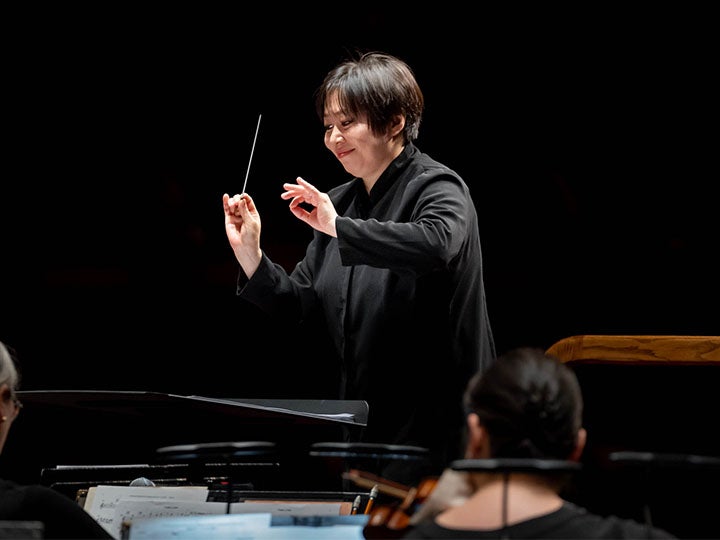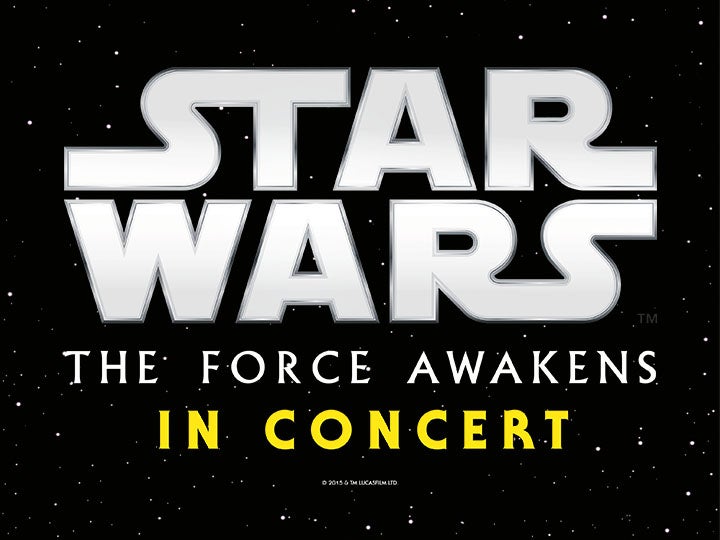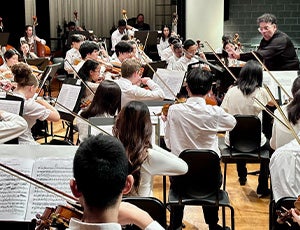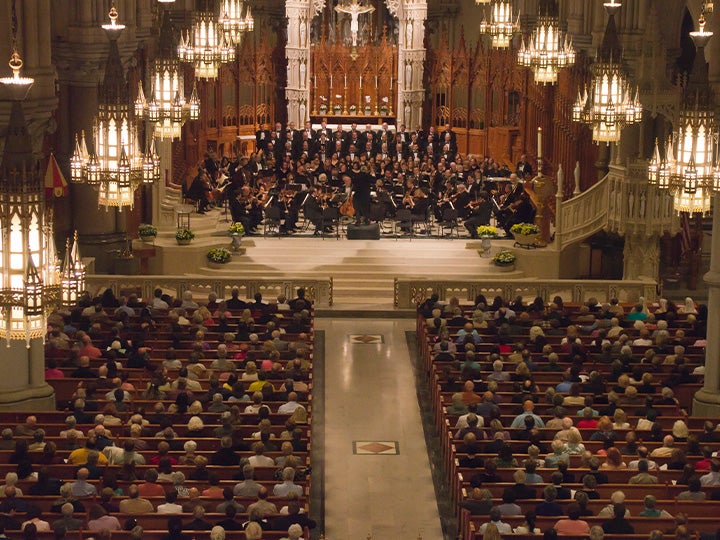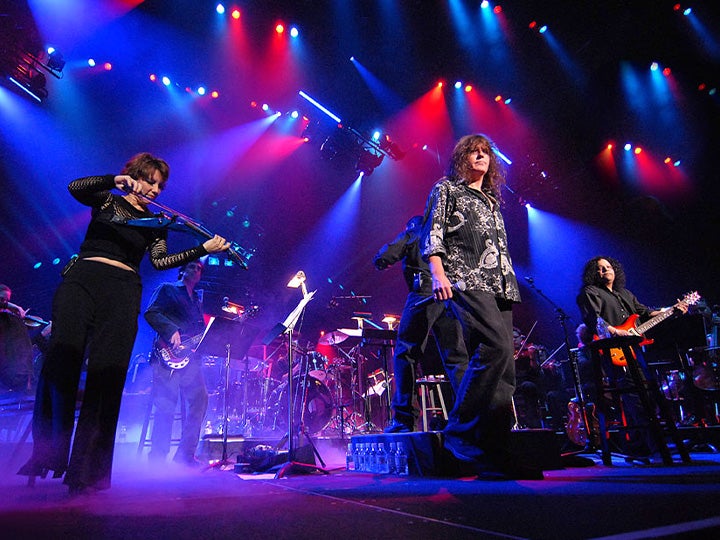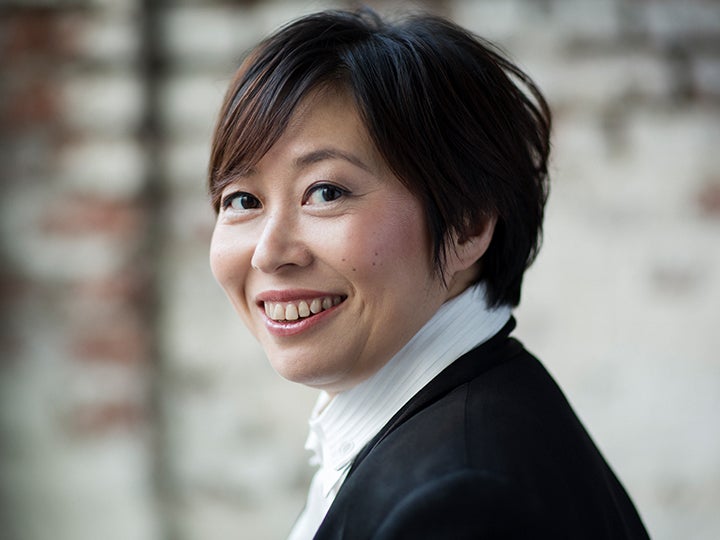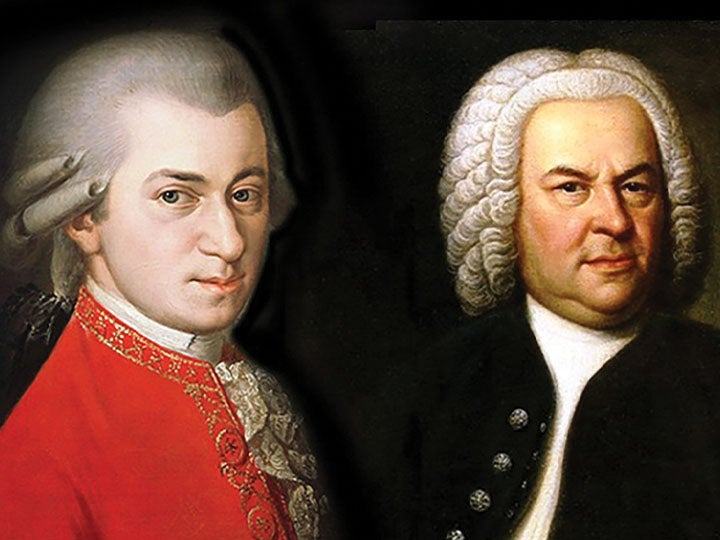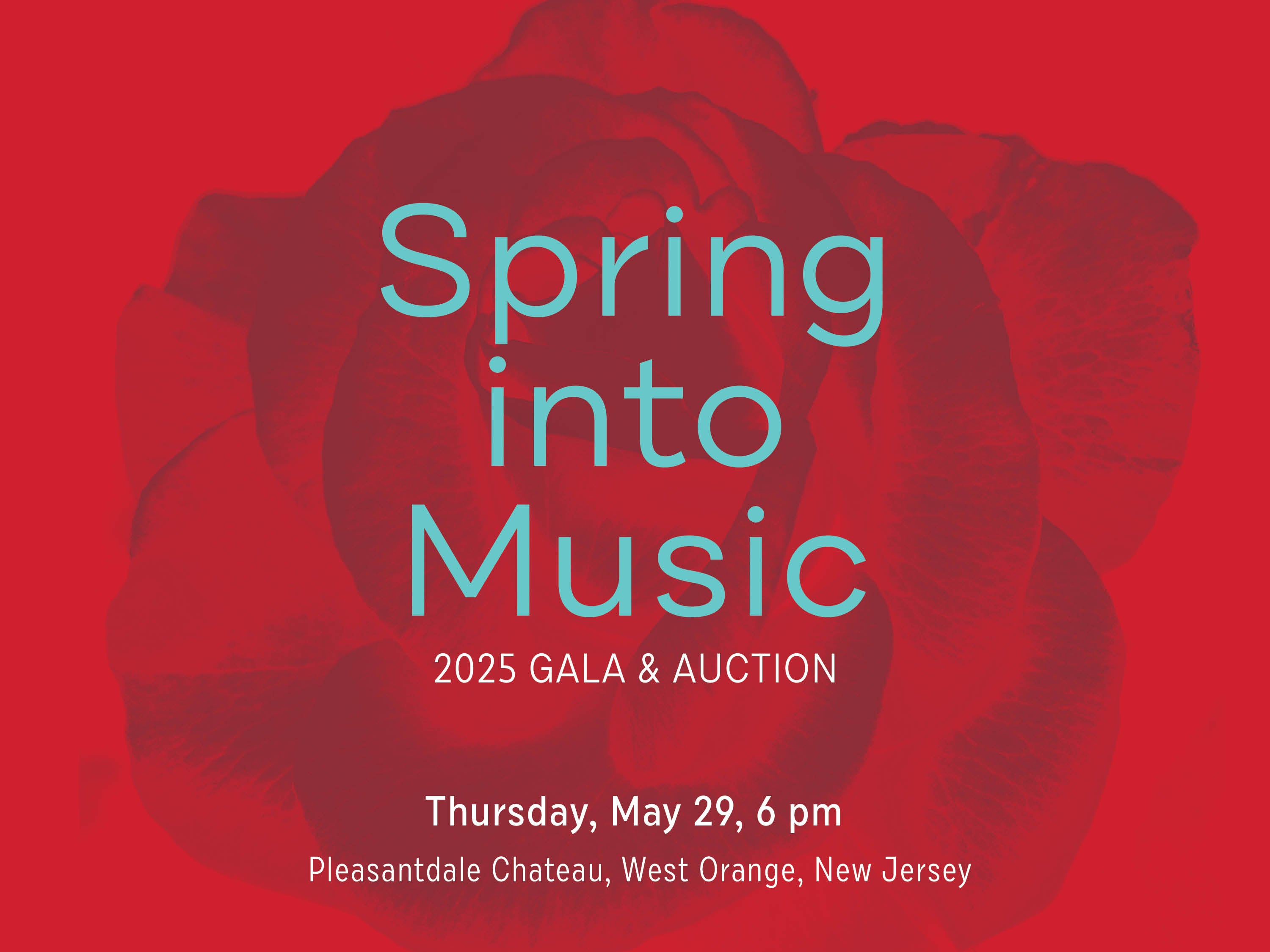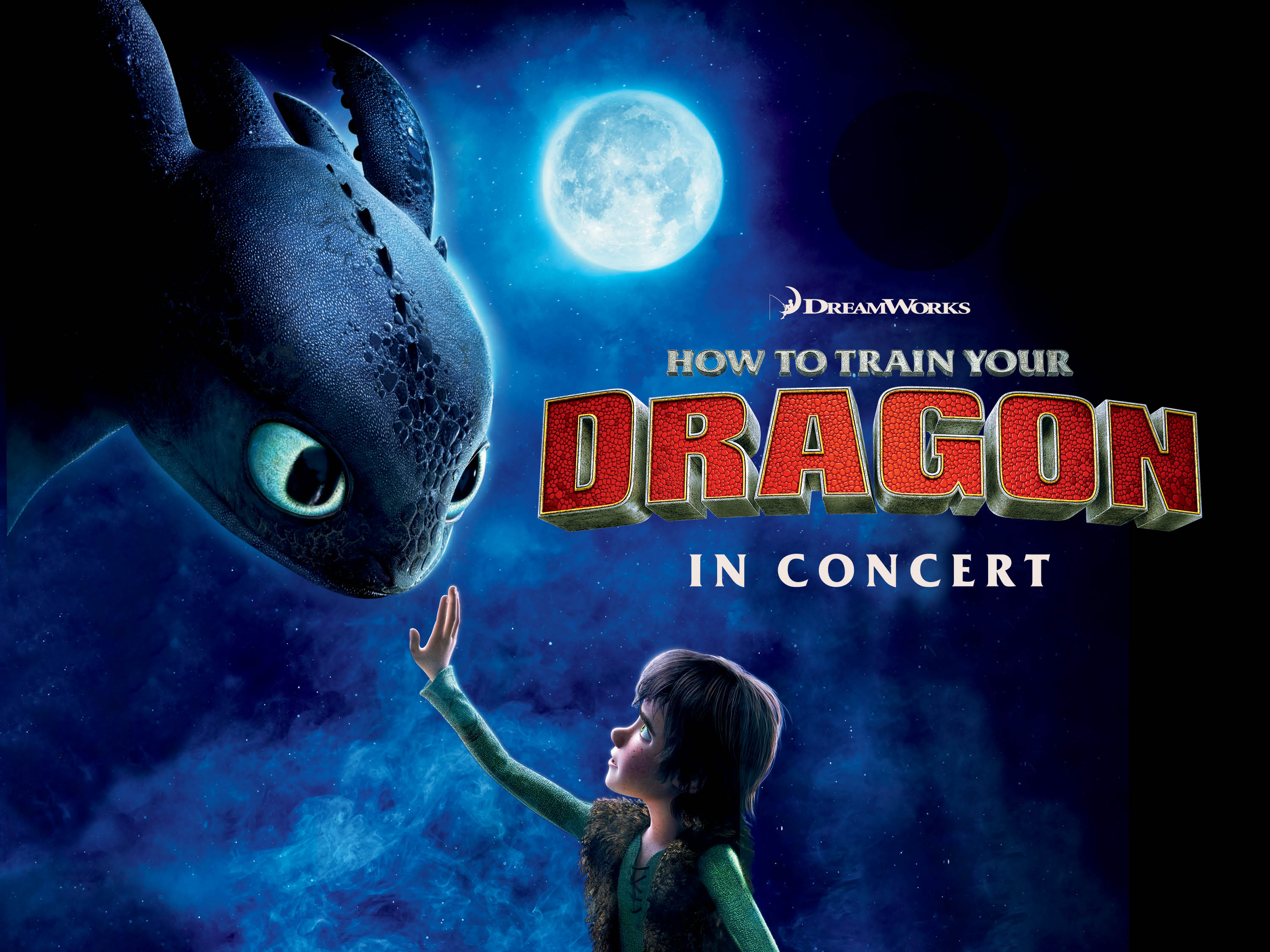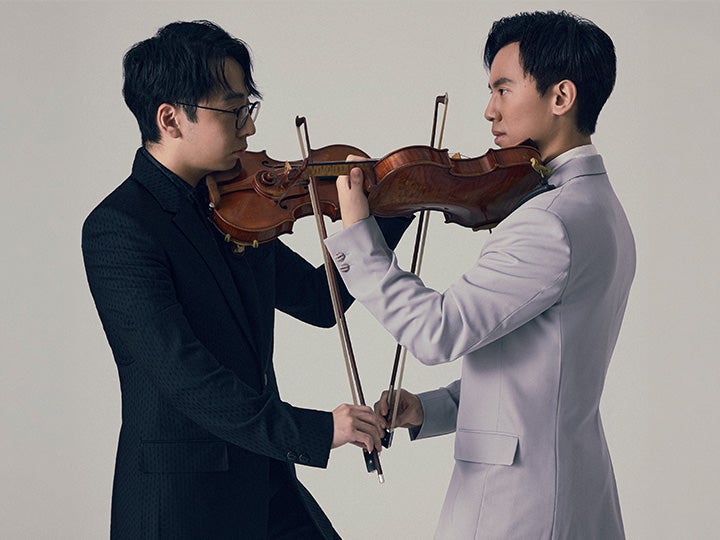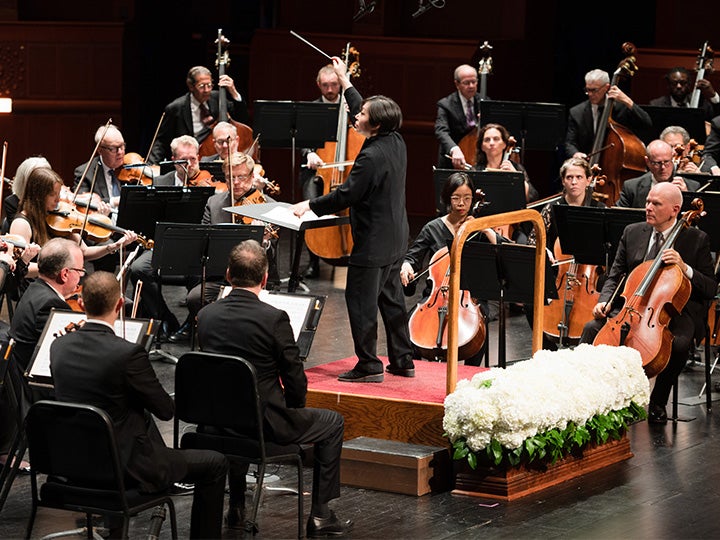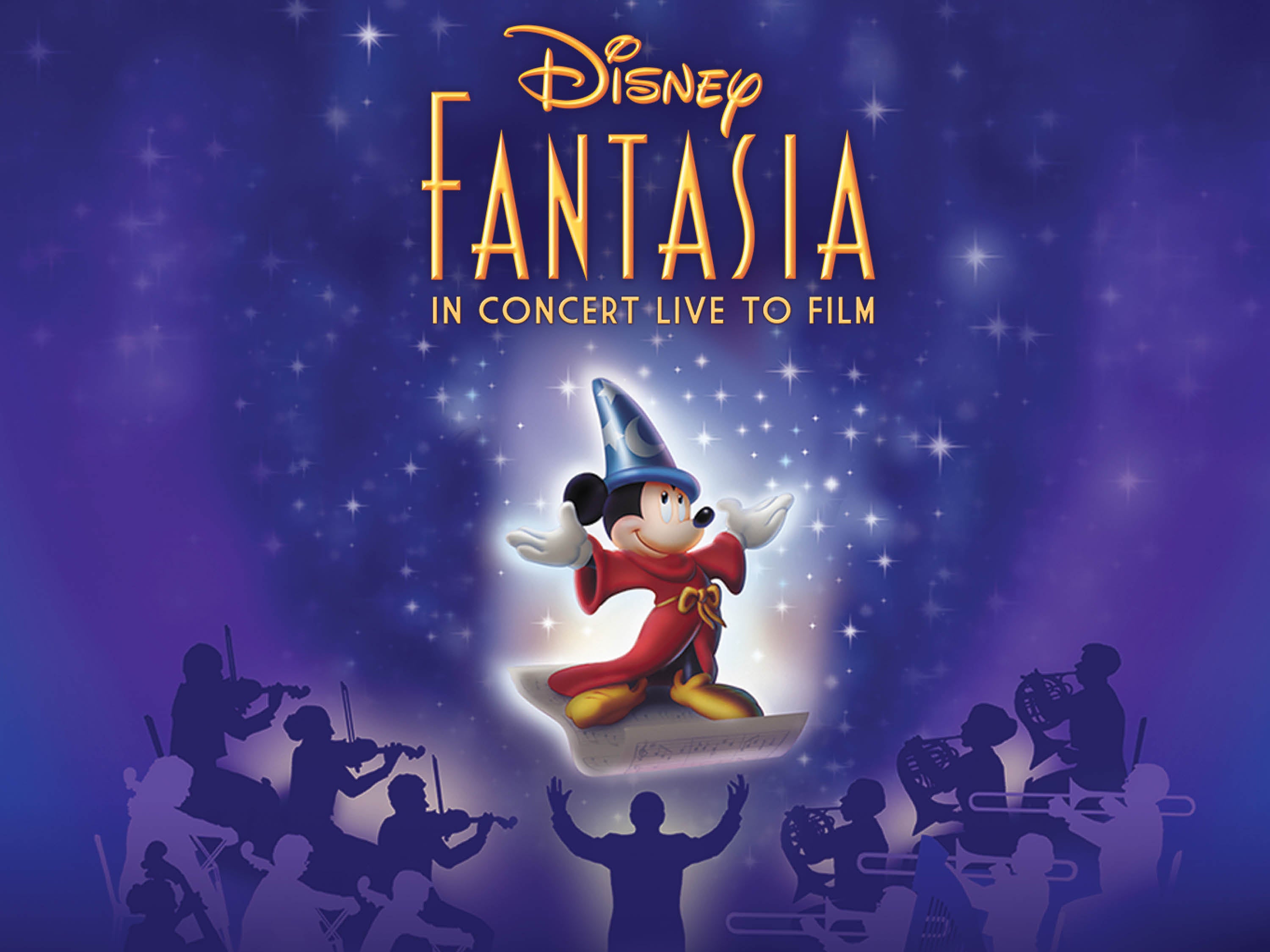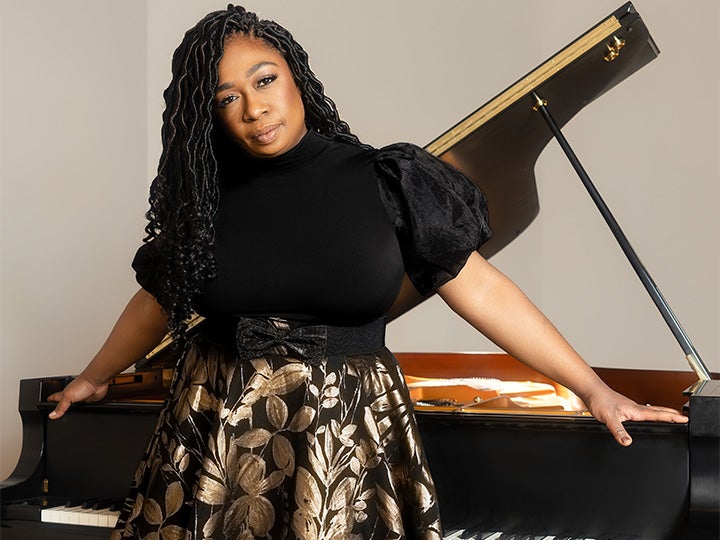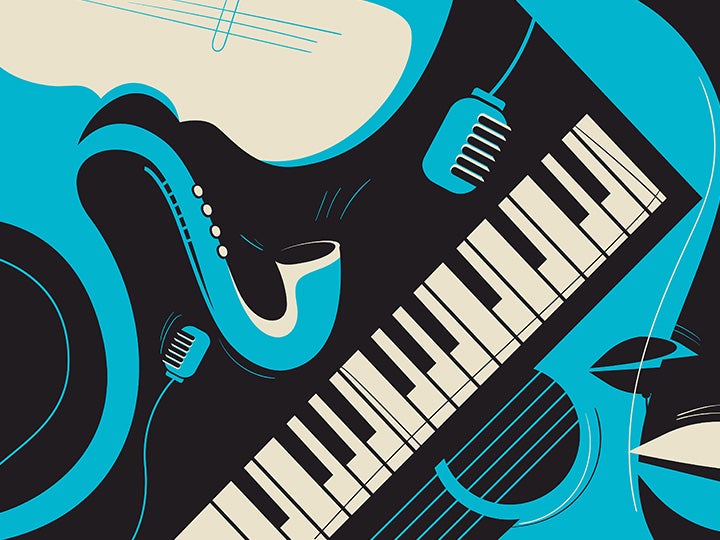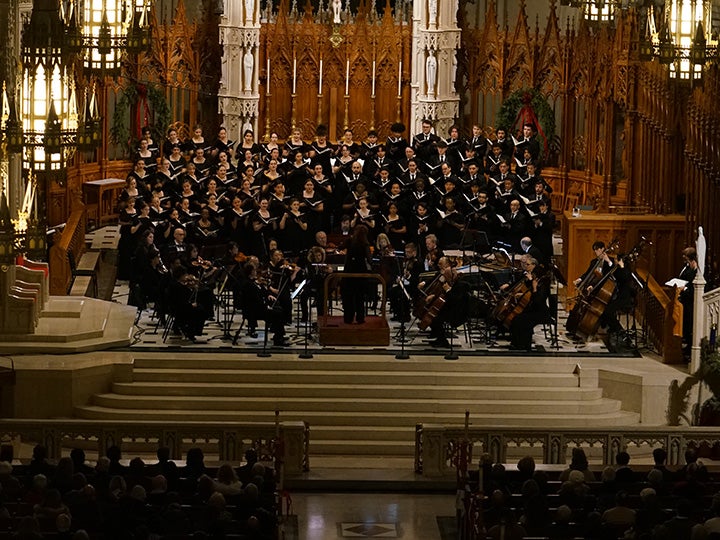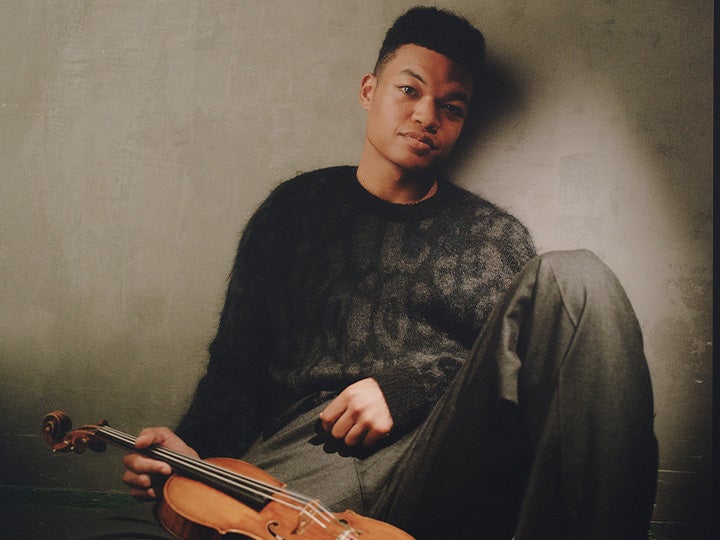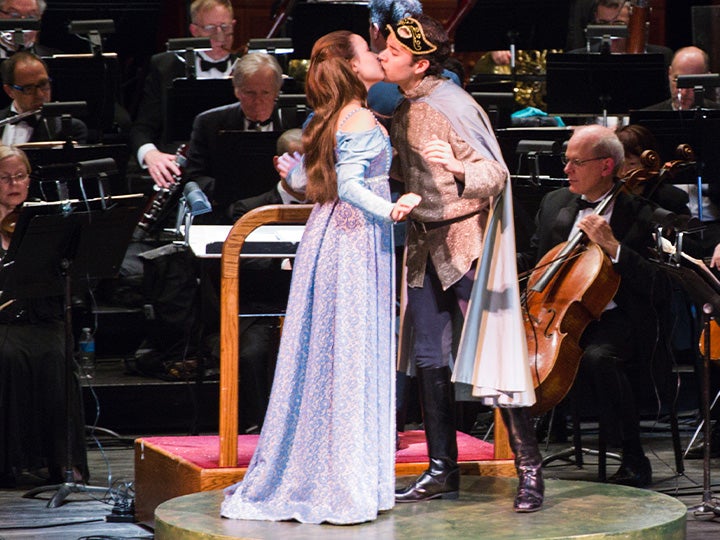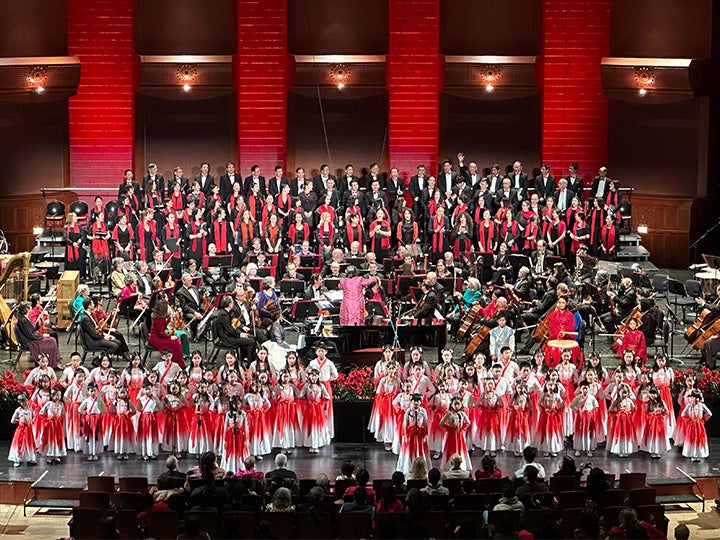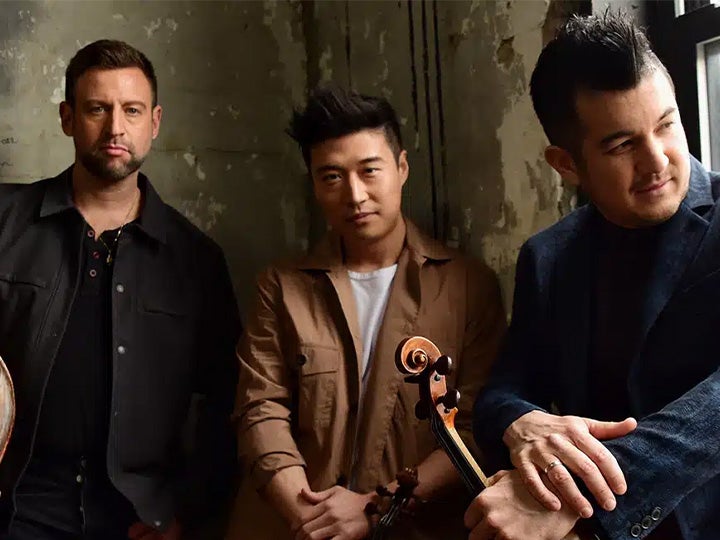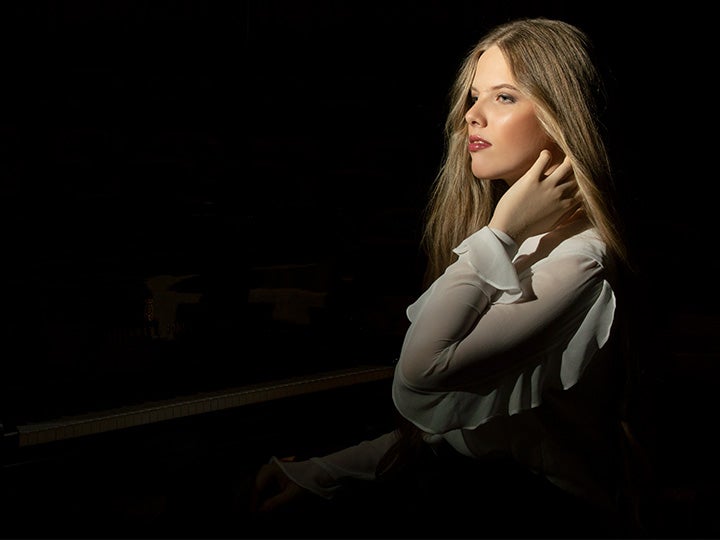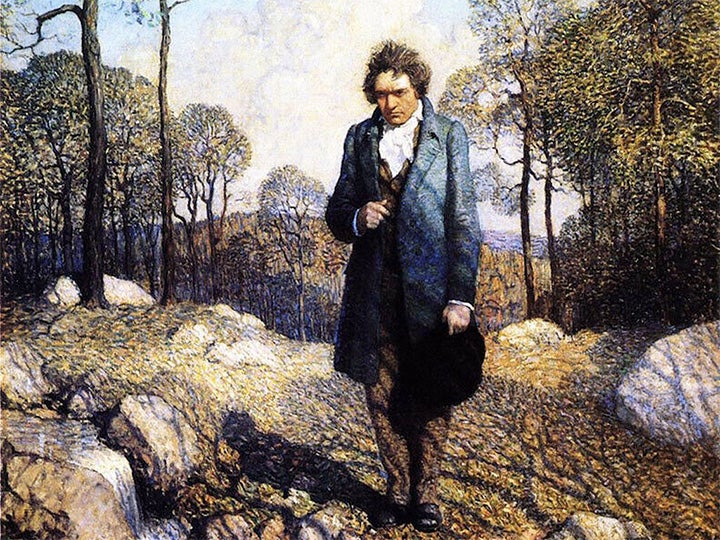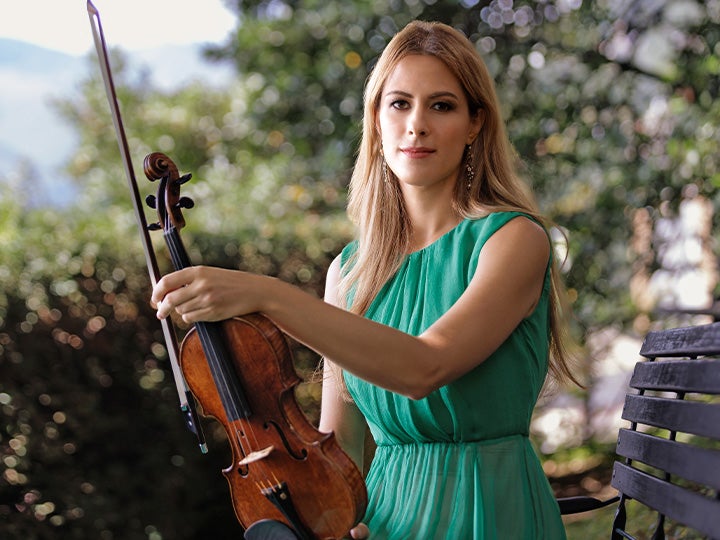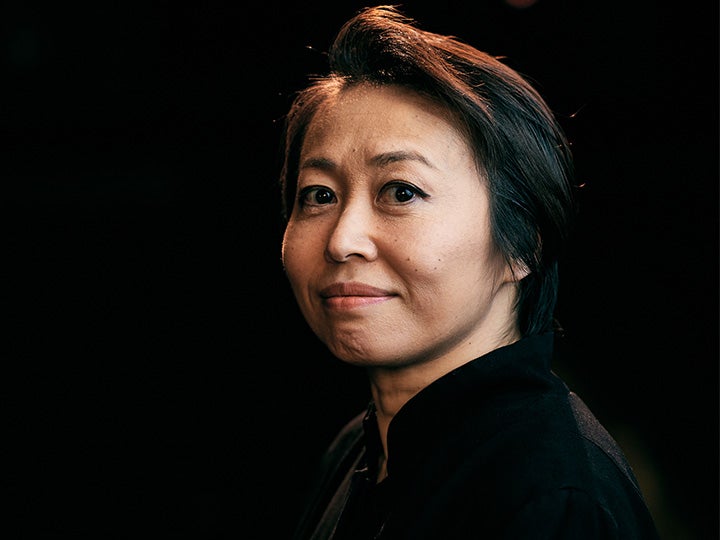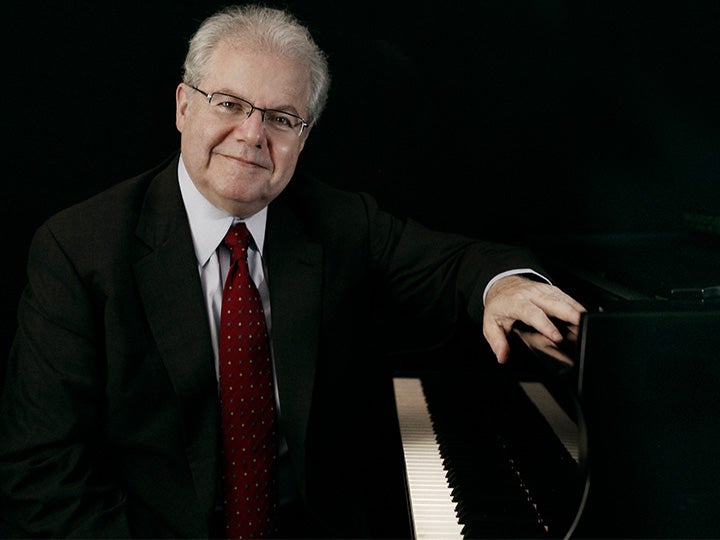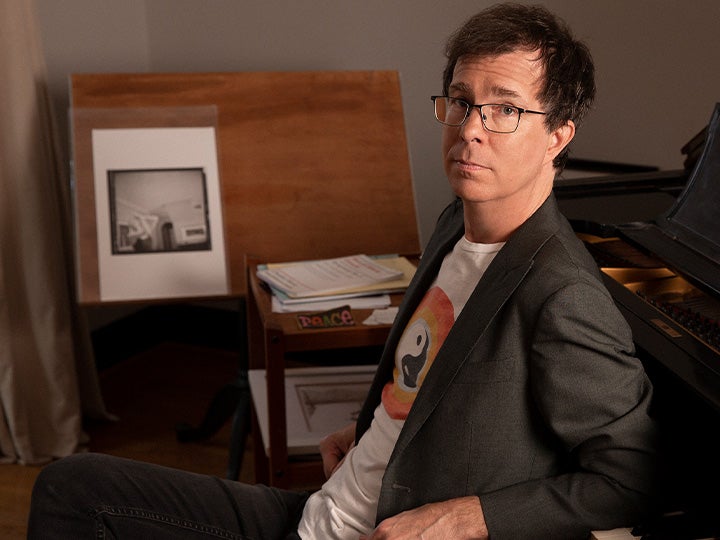Beethoven’s Ninth Symphony with Xian Zhang
New Jersey Symphony Classical
Xian Zhang conductor
Gregory D. McDaniel conductor
Steven Banks saxophone
Felicia Moore soprano
Kelley O’Connor mezzo-soprano
Issachah Savage tenor
Reginald Smith Jr. baritone
Montclair State University Chorale | Heather J. Buchanan, director
New Jersey Symphony
- Pytor Ilyich Tchaikovsky Polonaise from Eugene Onegin
A lavish ball scene, the dashing hero and heroine twirling in splendor—a fun, festive dance lifted from Tchaikovsky’s opera.
- Billy Childs Diaspora
Inspired by Maya Angelou and other poets, Childs’ new concerto was written for the amazing Steven Banks, who says the music “follows the trajectory of the Black experience from Africa before slave trade to now, going forward in hope.”
- Ludwig van Beethoven Symphony No. 9, “Choral”
The sheer volcanic power of Beethoven’s music makes the Ninth’s message soar. “Brotherhood! Joy!”—our world needs these clarion calls now more than ever.
Performed in Newark and New Brunswick
Beethoven’s Ninth Symphony with Xian Zhang
New Jersey Symphony Classical
Xian Zhang conductor
Gregory D. McDaniel conductor
Steven Banks saxophone
Felicia Moore soprano
Kelley O’Connor mezzo-soprano
Issachah Savage tenor
Reginald Smith Jr. baritone
Montclair State University Chorale | Heather J. Buchanan, director
New Jersey Symphony
- Pytor Ilyich Tchaikovsky Polonaise from Eugene Onegin
A lavish ball scene, the dashing hero and heroine twirling in splendor—a fun, festive dance lifted from Tchaikovsky’s opera.
- Billy Childs Diaspora
Inspired by Maya Angelou and other poets, Childs’ new concerto was written for the amazing Steven Banks, who says the music “follows the trajectory of the Black experience from Africa before slave trade to now, going forward in hope.”
- Ludwig van Beethoven Symphony No. 9, “Choral”
The sheer volcanic power of Beethoven’s music makes the Ninth’s message soar. “Brotherhood! Joy!”—our world needs these clarion calls now more than ever.
Performed in Newark and New Brunswick
Beethoven’s Ninth Symphony with Xian Zhang
New Jersey Symphony Classical
Xian Zhang conductor
Gregory D. McDaniel conductor
Steven Banks saxophone
Felicia Moore soprano
Kelley O’Connor mezzo-soprano
Issachah Savage tenor
Reginald Smith Jr. baritone
Montclair State University Chorale | Heather J. Buchanan, director
New Jersey Symphony
- Pytor Ilyich Tchaikovsky Polonaise from Eugene Onegin
A lavish ball scene, the dashing hero and heroine twirling in splendor—a fun, festive dance lifted from Tchaikovsky’s opera.
- Billy Childs Diaspora
Inspired by Maya Angelou and other poets, Childs’ new concerto was written for the amazing Steven Banks, who says the music “follows the trajectory of the Black experience from Africa before slave trade to now, going forward in hope.”
- Ludwig van Beethoven Symphony No. 9, “Choral”
The sheer volcanic power of Beethoven’s music makes the Ninth’s message soar. “Brotherhood! Joy!”—our world needs these clarion calls now more than ever.
Performed in Newark and New Brunswick
Beethoven’s Ninth Symphony with Xian Zhang
New Jersey Symphony Classical
Xian Zhang conductor
Gregory D. McDaniel conductor
Steven Banks saxophone
Felicia Moore soprano
Kelley O’Connor mezzo-soprano
Issachah Savage tenor
Reginald Smith Jr. baritone
Montclair State University Chorale | Heather J. Buchanan, director
New Jersey Symphony
- Pytor Ilyich Tchaikovsky Polonaise from Eugene Onegin
A lavish ball scene, the dashing hero and heroine twirling in splendor—a fun, festive dance lifted from Tchaikovsky’s opera.
- Billy Childs Diaspora
Inspired by Maya Angelou and other poets, Childs’ new concerto was written for the amazing Steven Banks, who says the music “follows the trajectory of the Black experience from Africa before slave trade to now, going forward in hope.”
- Ludwig van Beethoven Symphony No. 9, “Choral”
The sheer volcanic power of Beethoven’s music makes the Ninth’s message soar. “Brotherhood! Joy!”—our world needs these clarion calls now more than ever.
Performed in Newark and New Brunswick
Star Wars: The Force Awakens in Concert
New Jersey Symphony at the Movies
Constantine Kitsopoulos conductor
New Jersey Symphony
Thirty years after the defeat of the Empire, Luke Skywalker has vanished, and a new threat has risen: The First Order, led by the mysterious Supreme Leader Snoke and his enforcer, Kylo Ren. General Leia Organa’s military force, the Resistance—and unlikely heroes brought together by fate—are the galaxy’s only hope. Experience the complete film with the New Jersey Symphony performing John Williams’ thrilling score live.
Performed in Red Bank, Morristown, Newark and New Brunswick
Star Wars: The Force Awakens in Concert
New Jersey Symphony at the Movies
Constantine Kitsopoulos conductor
New Jersey Symphony
Thirty years after the defeat of the Empire, Luke Skywalker has vanished, and a new threat has risen: The First Order, led by the mysterious Supreme Leader Snoke and his enforcer, Kylo Ren. General Leia Organa’s military force, the Resistance—and unlikely heroes brought together by fate—are the galaxy’s only hope. Experience the complete film with the New Jersey Symphony performing John Williams’ thrilling score live.
Performed in Red Bank, Morristown, Newark and New Brunswick
Star Wars: The Force Awakens in Concert
New Jersey Symphony at the Movies
Constantine Kitsopoulos conductor
New Jersey Symphony
Thirty years after the defeat of the Empire, Luke Skywalker has vanished, and a new threat has risen: The First Order, led by the mysterious Supreme Leader Snoke and his enforcer, Kylo Ren. General Leia Organa’s military force, the Resistance—and unlikely heroes brought together by fate—are the galaxy’s only hope. Experience the complete film with the New Jersey Symphony performing John Williams’ thrilling score live.
Performed in Red Bank, Morristown, Newark and New Brunswick
Star Wars: The Force Awakens in Concert
New Jersey Symphony at the Movies
Constantine Kitsopoulos conductor
New Jersey Symphony
Thirty years after the defeat of the Empire, Luke Skywalker has vanished, and a new threat has risen: The First Order, led by the mysterious Supreme Leader Snoke and his enforcer, Kylo Ren. General Leia Organa’s military force, the Resistance—and unlikely heroes brought together by fate—are the galaxy’s only hope. Experience the complete film with the New Jersey Symphony performing John Williams’ thrilling score live.
Performed in Red Bank, Morristown, Newark and New Brunswick
Youth Orchestra Spring Concert
Two performances in one day! | Youth Orchestra Showcase
Diego García artistic director, The Anna P. Drago Chair
Terrence Thornhill associate conductor & curriculum specialist
New Jersey Symphony Youth Orchestra, The Resident Youth Orchestra of the John J. Cali School of Music at Montclair State University
The New Jersey Symphony Youth Orchestra will showcase 300 talented young musicians across two performances as part of their annual Spring Concert on Sunday, April 27 in Newark. Experience vibrant performances and celebrate the achievements of the 2024–25 season, including a special tribute to the graduating seniors.
Performed in Newark
Youth Orchestra Spring Concert
Two performances in one day! | Youth Orchestra Showcase
Diego García artistic director, The Anna P. Drago Chair
Terrence Thornhill associate conductor & curriculum specialist
New Jersey Symphony Youth Orchestra, The Resident Youth Orchestra of the John J. Cali School of Music at Montclair State University
The New Jersey Symphony Youth Orchestra will showcase 300 talented young musicians across two performances as part of their annual Spring Concert on Sunday, April 27 in Newark. Experience vibrant performances and celebrate the achievements of the 2024–25 season, including a special tribute to the graduating seniors.
Performed in Newark
Haydn’s Creation
New Jersey Symphony at the Cathedral
John J. Miller conductor
Lorraine Ernest soprano
Theodore Chletsos tenor
Jorge Ocasio bass-baritone
The Archdiocesan Festival Choir
The Cathedral Choir
New Jersey Symphony
The Cathedral Basilica of the Sacred Heart in Newark, NJ invites all to experience the music of Franz Joseph Haydn’s The Creation, featuring The Archdiocesan Festival Choir, The Cathedral Choir, vocal soloists and the New Jersey Symphony with John J. Miller conducting.
Performed in Newark
The Music of Led Zeppelin
Featuring hits like “Kashmir,” “Black Dog,” “Stairway to Heaven” and more!
Brent Havens conductor & arranger
Windborne Music Group
Justin Sargent vocalist
New Jersey Symphony
The New Jersey Symphony and Windborne Music Group bridge the gulf between classical music and rock n’ roll to present The Music of Led Zeppelin, celebrating the best of the legendary classic rock group. Amplified with full-on guitars and screaming vocals, sing and dance along as Led Zeppelin’s “sheer blast and power” is put on full display riff for riff with new musical colors. Timeless hits like “Kashmir,” “Black Dog,” “Stairway to Heaven” and more will get you on your feet in this special concert you don’t want to miss!
Performed in Englewood and New Brunswick
The Music of Led Zeppelin
Featuring hits like “Kashmir,” “Black Dog,” “Stairway to Heaven” and more!
Brent Havens conductor & arranger
Windborne Music Group
Justin Sargent vocalist
New Jersey Symphony
The New Jersey Symphony and Windborne Music Group bridge the gulf between classical music and rock n’ roll to present The Music of Led Zeppelin, celebrating the best of the legendary classic rock group. Amplified with full-on guitars and screaming vocals, sing and dance along as Led Zeppelin’s “sheer blast and power” is put on full display riff for riff with new musical colors. Timeless hits like “Kashmir,” “Black Dog,” “Stairway to Heaven” and more will get you on your feet in this special concert you don’t want to miss!
Performed in Englewood and New Brunswick
Xian Conducts Mozart
New Jersey Symphony musicians take the spotlight!
Xian Zhang conductor
Eric Wyrick violin
Francine Storck violin
New Jersey Symphony
- Wolfgang Amadeus Mozart Eine kleine Nachtmusik
Mozart may have tossed this off for a Viennese party one evening, but there is no piece more charming and beguiling than his “a little night music.”
- Johann Sebastian Bach Double Concerto for Two Violins
The spotlight’s on our two superstar principal violins, Eric Wyrick and Francine Storck, in perhaps the most beautiful duet ever created.
- Michael Abels Delights and Dances
Delight in this imaginative, bluesy work for solo string quartet and string orchestra, with New Jersey Symphony’s own musicians taking the spotlight in a series of captivating solos.
- Wolfgang Amadeus Mozart Symphony No. 35, “Haffner”
Mozart had intended to jot down a little occasional piece, but brilliant music kept pouring out of his pen until he’d made a dazzling full-fledged symphony, one of his best.
Performed in Princeton and Newark
Discover Mozart & Bach
New Jersey Symphony Family Concert:
A Music Discovery Zone
Xian Zhang conductor
Gregory D. McDaniel conductor
Bill Barclay host
Eric Wyrick violin
Francine Storck violin
Annamaria Witek cello
New Jersey Symphony
Discover what makes a live orchestra concert so special. We’ll take a deep dive into works by Mozart, as well as J.S. Bach’s incredibly famous Double Concerto for Two Violins. Also featured on the program is 2024 Henry Lewis Concerto Competition winner, cellist Annamaria Witek. Inspired by Leonard Bernstein’s masterful way of putting young audiences at the center of music-making, this interactive concert will feature inside tips, listening cues and fun facts that make for the perfect Saturday afternoon family outing!
- Wolfgang Amadeus Mozart Selection from Eine kleine Nachtmusik
- Camille Saint-Saëns Selection from Cello Concerto No. 1
- Johann Sebastian Bach Double Concerto for Two Violins
- Wolfgang Amadeus Mozart Symphony No. 35, “Haffner”
Performed in Newark
Xian Conducts Mozart
New Jersey Symphony musicians take the spotlight!
Xian Zhang conductor
Eric Wyrick violin
Francine Storck violin
New Jersey Symphony
- Wolfgang Amadeus Mozart Eine kleine Nachtmusik
Mozart may have tossed this off for a Viennese party one evening, but there is no piece more charming and beguiling than his “a little night music.”
- Johann Sebastian Bach Double Concerto for Two Violins
The spotlight’s on our two superstar principal violins, Eric Wyrick and Francine Storck, in perhaps the most beautiful duet ever created.
- Michael Abels Delights and Dances
Delight in this imaginative, bluesy work for solo string quartet and string orchestra, with New Jersey Symphony’s own musicians taking the spotlight in a series of captivating solos.
- Wolfgang Amadeus Mozart Symphony No. 35, “Haffner”
Mozart had intended to jot down a little occasional piece, but brilliant music kept pouring out of his pen until he’d made a dazzling full-fledged symphony, one of his best.
Performed in Princeton and Newark
Xian Conducts Mozart
New Jersey Symphony musicians take the spotlight!
Xian Zhang conductor
Eric Wyrick violin
Francine Storck violin
New Jersey Symphony
- Wolfgang Amadeus Mozart Eine kleine Nachtmusik
Mozart may have tossed this off for a Viennese party one evening, but there is no piece more charming and beguiling than his “a little night music.”
- Johann Sebastian Bach Double Concerto for Two Violins
The spotlight’s on our two superstar principal violins, Eric Wyrick and Francine Storck, in perhaps the most beautiful duet ever created.
- Michael Abels Delights and Dances
Delight in this imaginative, bluesy work for solo string quartet and string orchestra, with New Jersey Symphony’s own musicians taking the spotlight in a series of captivating solos.
- Wolfgang Amadeus Mozart Symphony No. 35, “Haffner”
Mozart had intended to jot down a little occasional piece, but brilliant music kept pouring out of his pen until he’d made a dazzling full-fledged symphony, one of his best.
Performed in Princeton and Newark
2025 Spring into Music Gala & Auction
Gala Reception and Dinner, Concert and Auction
Join the New Jersey Symphony and an array of cultural, social, business and civic leaders for an unforgettable evening of fine dining and entertainment as we honor former Governor Thomas H. Kean and his dedication to the performing arts industry in New Jersey. The event will feature a lavish cocktail reception with a few dazzling surprises, a dinner with a private performance featuring members of the New Jersey Symphony and students of the New Jersey Symphony Youth Orchestra and a silent auction.
Presented in West Orange
Rachmaninoff and Shostakovich
Season Finale | New Jersey Symphony Classical
Xian Zhang conductor
Conrad Tao piano
New Jersey Symphony
- Sergei Rachmaninoff Piano Concerto No. 2
No piece has introduced and won more people to classical music than Rachmaninoff’s magnificent work for piano and orchestra.
- Dmitri Shostakovich Symphony No. 5
When Shostakovich’s Fifth received a half-hour standing ovation at its premiere, the world knew that a classic was born—and it remains a landmark work for the virtuoso orchestra.
Performed in Morristown, Princeton, Red Bank and Newark
Rachmaninoff and Shostakovich
Season Finale | New Jersey Symphony Classical
Xian Zhang conductor
Conrad Tao piano
New Jersey Symphony
- Sergei Rachmaninoff Piano Concerto No. 2
No piece has introduced and won more people to classical music than Rachmaninoff’s magnificent work for piano and orchestra.
- Dmitri Shostakovich Symphony No. 5
When Shostakovich’s Fifth received a half-hour standing ovation at its premiere, the world knew that a classic was born—and it remains a landmark work for the virtuoso orchestra.
Performed in Morristown, Princeton, Red Bank and Newark
Rachmaninoff and Shostakovich
Season Finale | New Jersey Symphony Classical
Xian Zhang conductor
Conrad Tao piano
New Jersey Symphony
- Sergei Rachmaninoff Piano Concerto No. 2
No piece has introduced and won more people to classical music than Rachmaninoff’s magnificent work for piano and orchestra.
- Dmitri Shostakovich Symphony No. 5
When Shostakovich’s Fifth received a half-hour standing ovation at its premiere, the world knew that a classic was born—and it remains a landmark work for the virtuoso orchestra.
Performed in Morristown, Princeton, Red Bank and Newark
Rachmaninoff and Shostakovich
Season Finale | New Jersey Symphony Classical
Xian Zhang conductor
Conrad Tao piano
New Jersey Symphony
- Sergei Rachmaninoff Piano Concerto No. 2
No piece has introduced and won more people to classical music than Rachmaninoff’s magnificent work for piano and orchestra.
- Dmitri Shostakovich Symphony No. 5
When Shostakovich’s Fifth received a half-hour standing ovation at its premiere, the world knew that a classic was born—and it remains a landmark work for the virtuoso orchestra.
Performed in Morristown, Princeton, Red Bank and Newark
How to Train Your Dragon in Concert
New Jersey Symphony at the Movies
Lawrence Loh conductor
New Jersey Symphony
DreamWorks’ How to Train Your Dragon is a captivating and original story about a young Viking named Hiccup, who defies tradition when he befriends one of his deadliest foes—a ferocious dragon he calls Toothless. Together, these unlikely heroes must fight against all odds to save both their worlds. Featuring John Powell’s Oscar-nominated score performed live to picture, How to Train Your Dragon in Concert is a thrilling experience for all ages.
Performed in Morristown, New Brunswick and Newark
How to Train Your Dragon in Concert
New Jersey Symphony at the Movies
Lawrence Loh conductor
New Jersey Symphony
DreamWorks’ How to Train Your Dragon is a captivating and original story about a young Viking named Hiccup, who defies tradition when he befriends one of his deadliest foes—a ferocious dragon he calls Toothless. Together, these unlikely heroes must fight against all odds to save both their worlds. Featuring John Powell’s Oscar-nominated score performed live to picture, How to Train Your Dragon in Concert is a thrilling experience for all ages.
Performed in Morristown, New Brunswick and Newark
How to Train Your Dragon in Concert
New Jersey Symphony at the Movies
Lawrence Loh conductor
New Jersey Symphony
DreamWorks’ How to Train Your Dragon is a captivating and original story about a young Viking named Hiccup, who defies tradition when he befriends one of his deadliest foes—a ferocious dragon he calls Toothless. Together, these unlikely heroes must fight against all odds to save both their worlds. Featuring John Powell’s Oscar-nominated score performed live to picture, How to Train Your Dragon in Concert is a thrilling experience for all ages.
Performed in Morristown, New Brunswick and Newark
TwoSet Violin with the New Jersey Symphony
Part of the TwoSet Violin World Tour
TwoSet Violin
New Jersey Symphony
World-famous YouTube classical music comedy duo TwoSet Violin take the stage with the New Jersey Symphony for a wide-ranging night of musical fun! Violinists Eddy Chen and Brett Yang will take their unique brand of earnest and silly musical comedy to a new level in this performance, with the backing of a full symphony orchestra.
Performed in Newark
Opening Night Celebration
Dinner Prelude, Concert and After-Party
You are invited to the New Jersey Symphony’s 2025 Season Opening Celebration honoring Xian Zhang’s 10th season as Music Director. Guests will enjoy an elegant dinner prelude, the season opening concert featuring Music Director Xian Zhang, guest artist Joyce Yang and the New Jersey Symphony and a dessert after-party.
Presented in Newark
Tchaikovsky’s Piano Concerto No. 1
Opening Weekend | New Jersey Symphony Classical
Xian Zhang conductor
Joyce Yang piano
New Jersey Symphony
- Jessie Montgomery Hymn for Everyone
We launch the season with Montgomery’s open-arms musical welcome. In her Hymn for Everyone you’ll hear an echo of “Lift Every Voice and Sing,” often called the Black National Anthem.
- Pyotr Ilyich Tchaikovsky Piano Concerto No. 1
Slammed as a flop at its premiere, Tchaikovsky more than had the last laugh: here’s jaw-dropping virtuosity for the soloist, sweeping melodies for the orchestra, and an audience favorite around the world.
- Antonín Dvořák Symphony No. 8
Dvořák’s pen might as well have been a paint brush. In his tuneful Eighth you can practically see autumn’s most vivid colors and the heart-melting glow of an October sunset.
Performed in Newark and Red Bank
Tchaikovsky’s Piano Concerto No. 1
Opening Weekend | New Jersey Symphony Classical
Xian Zhang conductor
Joyce Yang piano
New Jersey Symphony
- Jessie Montgomery Hymn for Everyone
We launch the season with Montgomery’s open-arms musical welcome. In her Hymn for Everyone you’ll hear an echo of “Lift Every Voice and Sing,” often called the Black National Anthem.
- Pyotr Ilyich Tchaikovsky Piano Concerto No. 1
Slammed as a flop at its premiere, Tchaikovsky more than had the last laugh: here’s jaw-dropping virtuosity for the soloist, sweeping melodies for the orchestra, and an audience favorite around the world.
- Antonín Dvořák Symphony No. 8
Dvořák’s pen might as well have been a paint brush. In his tuneful Eighth you can practically see autumn’s most vivid colors and the heart-melting glow of an October sunset.
Performed in Newark and Red Bank
Tchaikovsky’s Piano Concerto No. 1
Opening Weekend | New Jersey Symphony Classical
Xian Zhang conductor
Joyce Yang piano
New Jersey Symphony
- Jessie Montgomery Hymn for Everyone
We launch the season with Montgomery’s open-arms musical welcome. In her Hymn for Everyone you’ll hear an echo of “Lift Every Voice and Sing,” often called the Black National Anthem.
- Pyotr Ilyich Tchaikovsky Piano Concerto No. 1
Slammed as a flop at its premiere, Tchaikovsky more than had the last laugh: here’s jaw-dropping virtuosity for the soloist, sweeping melodies for the orchestra, and an audience favorite around the world.
- Antonín Dvořák Symphony No. 8
Dvořák’s pen might as well have been a paint brush. In his tuneful Eighth you can practically see autumn’s most vivid colors and the heart-melting glow of an October sunset.
Performed in Newark and Red Bank
Disney’s Fantasia in Concert
New Jersey Symphony at the Movies
Constantine Kitsopoulos conductor
New Jersey Symphony
Experience Disney’s groundbreaking marriage of symphonic music and animation, Fantasia. Beloved repertoire from the original 1940 version and Fantasia 2000, including The Sorcerer’s Apprentice, Beethoven’s Fifth Symphony, and The Nutcracker Suite, will be performed by the New Jersey Symphony while Disney’s stunning footage is shown on the big screen. Enjoy iconic moments and childhood favorites like never before!
Performed in Morristown, Red Bank and New Brunswick
Disney’s Fantasia in Concert
New Jersey Symphony at the Movies
Constantine Kitsopoulos conductor
New Jersey Symphony
Experience Disney’s groundbreaking marriage of symphonic music and animation, Fantasia. Beloved repertoire from the original 1940 version and Fantasia 2000, including The Sorcerer’s Apprentice, Beethoven’s Fifth Symphony, and The Nutcracker Suite, will be performed by the New Jersey Symphony while Disney’s stunning footage is shown on the big screen. Enjoy iconic moments and childhood favorites like never before!
Performed in Morristown, Red Bank and New Brunswick
Disney’s Fantasia in Concert
New Jersey Symphony at the Movies
Constantine Kitsopoulos conductor
New Jersey Symphony
Experience Disney’s groundbreaking marriage of symphonic music and animation, Fantasia. Beloved repertoire from the original 1940 version and Fantasia 2000, including The Sorcerer’s Apprentice, Beethoven’s Fifth Symphony, and The Nutcracker Suite, will be performed by the New Jersey Symphony while Disney’s stunning footage is shown on the big screen. Enjoy iconic moments and childhood favorites like never before!
Performed in Morristown, Red Bank and New Brunswick
Rhapsody in Blue
Plus works by Florence Price & Carlos Simon!
Tito Muñoz conductor
Michelle Cann piano
New Jersey Symphony
- Florence Price Piano Concerto in One Movement
An American genius, Florence Price mixes luscious lyricism with ragtime stomp. This recently unearthed gem won Cann—the leading interpreter of Price’s piano music—a 2023 GRAMMY.
- George Gershwin Rhapsody in Blue
United Airlines knows a good tune when it hears one, and that melody is the heartbeat of Gershwin’s classic. But not before the famous swooping clarinet solo gets this piece of the Roaring Twenties underway.
- Carlos Simon Zodiac (Northeast Premiere, New Jersey Symphony Co-Commission)
Carlos Simon is one of America’s leading contemporary composers, and in his latest music, a proud co-commission of the New Jersey Symphony, Simon gives voice to all 12 zodiac signs—the music at turns fiery, ethereal, and soaring.
- Aaron Copland Suite from Billy the Kid
Cowboy songs, folk tunes, and a visionary composer—all the ingredients that made Copland’s wild-west ballet a hit in the ‘30s and a favorite still.
Performed in Newark, Princeton and New Brunswick
Rhapsody in Blue
Plus works by Florence Price & Carlos Simon!
Tito Muñoz conductor
Michelle Cann piano
New Jersey Symphony
- Florence Price Piano Concerto in One Movement
An American genius, Florence Price mixes luscious lyricism with ragtime stomp. This recently unearthed gem won Cann—the leading interpreter of Price’s piano music—a 2023 GRAMMY.
- George Gershwin Rhapsody in Blue
United Airlines knows a good tune when it hears one, and that melody is the heartbeat of Gershwin’s classic. But not before the famous swooping clarinet solo gets this piece of the Roaring Twenties underway.
- Carlos Simon Zodiac (Northeast Premiere, New Jersey Symphony Co-Commission)
Carlos Simon is one of America’s leading contemporary composers, and in his latest music, a proud co-commission of the New Jersey Symphony, Simon gives voice to all 12 zodiac signs—the music at turns fiery, ethereal, and soaring.
- Aaron Copland Suite from Billy the Kid
Cowboy songs, folk tunes, and a visionary composer—all the ingredients that made Copland’s wild-west ballet a hit in the ‘30s and a favorite still.
Performed in Newark, Princeton and New Brunswick
Discover Rhapsody
in Blue
New Jersey Symphony Family Concert
Tito Muñoz conductor
Michelle Cann piano
New Jersey Symphony
Discover what makes a live orchestra concert so special. We’ll take a deep dive into one of the greatest American piano concertos, Gershwin’s Rhapsody in Blue, followed by Copland’s lively Suite from Billy the Kid.
Performed in Newark
Rhapsody in Blue
Plus works by Florence Price & Carlos Simon!
Tito Muñoz conductor
Michelle Cann piano
New Jersey Symphony
- Florence Price Piano Concerto in One Movement
An American genius, Florence Price mixes luscious lyricism with ragtime stomp. This recently unearthed gem won Cann—the leading interpreter of Price’s piano music—a 2023 GRAMMY.
- George Gershwin Rhapsody in Blue
United Airlines knows a good tune when it hears one, and that melody is the heartbeat of Gershwin’s classic. But not before the famous swooping clarinet solo gets this piece of the Roaring Twenties underway.
- Carlos Simon Zodiac (Northeast Premiere, New Jersey Symphony Co-Commission)
Carlos Simon is one of America’s leading contemporary composers, and in his latest music, a proud co-commission of the New Jersey Symphony, Simon gives voice to all 12 zodiac signs—the music at turns fiery, ethereal, and soaring.
- Aaron Copland Suite from Billy the Kid
Cowboy songs, folk tunes, and a visionary composer—all the ingredients that made Copland’s wild-west ballet a hit in the ‘30s and a favorite still.
Performed in Newark, Princeton and New Brunswick
Rhapsody in Blue
Plus works by Florence Price & Carlos Simon!
Tito Muñoz conductor
Michelle Cann piano
New Jersey Symphony
- Florence Price Piano Concerto in One Movement
An American genius, Florence Price mixes luscious lyricism with ragtime stomp. This recently unearthed gem won Cann—the leading interpreter of Price’s piano music—a 2023 GRAMMY.
- George Gershwin Rhapsody in Blue
United Airlines knows a good tune when it hears one, and that melody is the heartbeat of Gershwin’s classic. But not before the famous swooping clarinet solo gets this piece of the Roaring Twenties underway.
- Carlos Simon Zodiac (Northeast Premiere, New Jersey Symphony Co-Commission)
Carlos Simon is one of America’s leading contemporary composers, and in his latest music, a proud co-commission of the New Jersey Symphony, Simon gives voice to all 12 zodiac signs—the music at turns fiery, ethereal, and soaring.
- Aaron Copland Suite from Billy the Kid
Cowboy songs, folk tunes, and a visionary composer—all the ingredients that made Copland’s wild-west ballet a hit in the ‘30s and a favorite still.
Performed in Newark, Princeton and New Brunswick
Elf in Concert
New Jersey Symphony at the Movies
Conner Gray Covington conductor
New Jersey Symphony
Buddy was accidentally transported to the North Pole as a toddler and raised to adulthood among Santa’s elves. Unable to shake the feeling that he doesn’t fit in, the adult Buddy travels to New York, in full elf uniform, in search of his real father. This holiday season, relive this heartwarming holiday classic on a giant screen as every note of John Debney’s wonderful score is played live to picture in: Elf in Concert!
Performed in Newark and Red Bank
Elf in Concert
New Jersey Symphony at the Movies
Conner Gray Covington conductor
New Jersey Symphony
Buddy was accidentally transported to the North Pole as a toddler and raised to adulthood among Santa’s elves. Unable to shake the feeling that he doesn’t fit in, the adult Buddy travels to New York, in full elf uniform, in search of his real father. This holiday season, relive this heartwarming holiday classic on a giant screen as every note of John Debney’s wonderful score is played live to picture in: Elf in Concert!
Performed in Newark and Red Bank
Handel’s Messiah
New Jersey Symphony Holiday Tradition
Anthony Parnther conductor
Caitlin Gotimer soprano
Maria Dominique Lopez mezzo-soprano
Orson Van Gay II tenor
Shyheim Selvan Hinnant bass-baritone
Montclair State University Singers | Heather J. Buchanan, director
New Jersey Symphony
Handel’s Messiah embraces every emotion, from the first voice singing “Comfort ye,” inviting you to step aside from the season’s frenzy, to the riveting Amen Chorus at the end. In between are moments of transcendence, loss, and deeply-felt awe—what makes a classic a classic.
Performed in Princeton and Newark
Handel’s Messiah
New Jersey Symphony Holiday Tradition
Anthony Parnther conductor
Caitlin Gotimer soprano
Maria Dominique Lopez mezzo-soprano
Orson Van Gay II tenor
Shyheim Selvan Hinnant bass-baritone
Montclair State University Singers | Heather J. Buchanan, director
New Jersey Symphony
Handel’s Messiah embraces every emotion, from the first voice singing “Comfort ye,” inviting you to step aside from the season’s frenzy, to the riveting Amen Chorus at the end. In between are moments of transcendence, loss, and deeply-felt awe—what makes a classic a classic.
Performed in Princeton and Newark
Handel’s Messiah
New Jersey Symphony Holiday Tradition
Anthony Parnther conductor
Caitlin Gotimer soprano
Maria Dominique Lopez mezzo-soprano
Orson Van Gay II tenor
Shyheim Selvan Hinnant bass-baritone
Montclair State University Singers | Heather J. Buchanan, director
New Jersey Symphony
Handel’s Messiah embraces every emotion, from the first voice singing “Comfort ye,” inviting you to step aside from the season’s frenzy, to the riveting Amen Chorus at the end. In between are moments of transcendence, loss, and deeply-felt awe—what makes a classic a classic.
Performed in Princeton and Newark
Randall Goosby Returns
New Jersey Symphony Classical
Xian Zhang conductor
Randall Goosby violin
New Jersey Symphony
- Jean Sibelius Finlandia
Eight minutes that saved a nation. When Finland wrestled itself free from the Russian bear, Sibelius’ music was the Finns’ call to courage.
- Samuel Barber Violin Concerto
The most gorgeous violin concerto of the 20th century: the first two movements exquisitely touching, and the third a wild sprint for only the bravest of soloists.
- Pytor Ilyich Tchaikovsky Symphony No. 2, “Ukrainian”
Three Ukrainian folksongs were all Tchaikovsky needed for inspiration. From them, he spun his most joyful symphony.
Performed in New Brunswick, Princeton, Newark and Morristown
Randall Goosby Returns
New Jersey Symphony Classical
Xian Zhang conductor
Randall Goosby violin
New Jersey Symphony
- Jean Sibelius Finlandia
Eight minutes that saved a nation. When Finland wrestled itself free from the Russian bear, Sibelius’ music was the Finns’ call to courage.
- Samuel Barber Violin Concerto
The most gorgeous violin concerto of the 20th century: the first two movements exquisitely touching, and the third a wild sprint for only the bravest of soloists.
- Pytor Ilyich Tchaikovsky Symphony No. 2, “Ukrainian”
Three Ukrainian folksongs were all Tchaikovsky needed for inspiration. From them, he spun his most joyful symphony.
Performed in New Brunswick, Princeton, Newark and Morristown
Randall Goosby Returns
New Jersey Symphony Classical
Xian Zhang conductor
Randall Goosby violin
New Jersey Symphony
- Jean Sibelius Finlandia
Eight minutes that saved a nation. When Finland wrestled itself free from the Russian bear, Sibelius’ music was the Finns’ call to courage.
- Samuel Barber Violin Concerto
The most gorgeous violin concerto of the 20th century: the first two movements exquisitely touching, and the third a wild sprint for only the bravest of soloists.
- Pytor Ilyich Tchaikovsky Symphony No. 2, “Ukrainian”
Three Ukrainian folksongs were all Tchaikovsky needed for inspiration. From them, he spun his most joyful symphony.
Performed in New Brunswick, Princeton, Newark and Morristown
Randall Goosby Returns
New Jersey Symphony Classical
Xian Zhang conductor
Randall Goosby violin
New Jersey Symphony
- Jean Sibelius Finlandia
Eight minutes that saved a nation. When Finland wrestled itself free from the Russian bear, Sibelius’ music was the Finns’ call to courage.
- Samuel Barber Violin Concerto
The most gorgeous violin concerto of the 20th century: the first two movements exquisitely touching, and the third a wild sprint for only the bravest of soloists.
- Pytor Ilyich Tchaikovsky Symphony No. 2, “Ukrainian”
Three Ukrainian folksongs were all Tchaikovsky needed for inspiration. From them, he spun his most joyful symphony.
Performed in New Brunswick, Princeton, Newark and Morristown
Romeo & Juliet
Featuring The Shakespeare Theatre of New Jersey
Xian Zhang conductor
The Shakespeare Theatre of New Jersey
New Jersey Symphony
- Pytor Ilyich Tchaikovsky Romeo and Juliet Fantasy Overture
Tchaikovsky gives you all the passion and drama of Shakespeare’s two young lovers, as the New Jersey Symphony becomes a storyteller in real time.
- Sergei Prokofiev Selections from Romeo and Juliet
Considered too difficult, even undanceable at its unveiling, Prokofiev’s ballet with scene after scene of strikingly original music soon became the treasure of every ballet house the world over.
Performed in Newark and Red Bank
Romeo & Juliet
Featuring The Shakespeare Theatre of New Jersey
Xian Zhang conductor
The Shakespeare Theatre of New Jersey
New Jersey Symphony
- Pytor Ilyich Tchaikovsky Romeo and Juliet Fantasy Overture
Tchaikovsky gives you all the passion and drama of Shakespeare’s two young lovers, as the New Jersey Symphony becomes a storyteller in real time.
- Sergei Prokofiev Selections from Romeo and Juliet
Considered too difficult, even undanceable at its unveiling, Prokofiev’s ballet with scene after scene of strikingly original music soon became the treasure of every ballet house the world over.
Performed in Newark and Red Bank
Romeo & Juliet
Featuring The Shakespeare Theatre of New Jersey
Xian Zhang conductor
The Shakespeare Theatre of New Jersey
New Jersey Symphony
- Pytor Ilyich Tchaikovsky Romeo and Juliet Fantasy Overture
Tchaikovsky gives you all the passion and drama of Shakespeare’s two young lovers, as the New Jersey Symphony becomes a storyteller in real time.
- Sergei Prokofiev Selections from Romeo and Juliet
Considered too difficult, even undanceable at its unveiling, Prokofiev’s ballet with scene after scene of strikingly original music soon became the treasure of every ballet house the world over.
Performed in Newark and Red Bank
Romeo & Juliet
Featuring The Shakespeare Theatre of New Jersey
Xian Zhang conductor
The Shakespeare Theatre of New Jersey
New Jersey Symphony
- Pytor Ilyich Tchaikovsky Romeo and Juliet Fantasy Overture
Tchaikovsky gives you all the passion and drama of Shakespeare’s two young lovers, as the New Jersey Symphony becomes a storyteller in real time.
- Sergei Prokofiev Selections from Romeo and Juliet
Considered too difficult, even undanceable at its unveiling, Prokofiev’s ballet with scene after scene of strikingly original music soon became the treasure of every ballet house the world over.
Performed in Newark and Red Bank
2026 Lunar New Year Celebration
Celebration of the Year of the Horse
Sunny Xia conductor
Haochen Zhang piano
Peking University Alumni Chorus
New Jersey Symphony
Enjoy an evening of community and cultural exchange that is wonderful for families and children, as we celebrate the Year of the Horse. Seattle Symphony Associate Conductor Sunny Xia and Van Cliburn International Piano Competition Winner Haochen Zhang make their New Jersey Symphony debuts in this festive concert that celebrates music from East and West.
Performed in Newark
Beethoven’s Fifth Symphony
Time for Three Performs Contact
Markus Stenz conductor
Time for Three
Ranaan Meyer double bass | Nick Kendall violin | Charles Yang violin
New Jersey Symphony
- Richard Wagner Prelude to Act I of Lohengrin
It begins with the strings alone playing a whisperquiet passage of holy serenity. Soon the whole orchestra joins and builds in a full-throated cry. Wagner’s operatic stage is set for the arrival of the knight Lohengrin sent on a mission from God.
- Kevin Puts Contact
Time for Three, a self-described “classically trained garage band,” brings you the GRAMMY Award-winning concerto written for them by Pulitzer Prize-winning composer Kevin Puts. Created during the isolation of the early pandemic, Contact is “an expression of yearning for the fundamental need” of human connection.
- Ludwig van Beethoven Symphony No. 5
Four notes—dah, dah, dah, DAH—launched Beethoven’s Fifth in 1808 and have stamped all of western classical music since.
Performed in Morristown and Newark
Beethoven’s Fifth Symphony
Time for Three Performs Contact
Markus Stenz conductor
Time for Three
Ranaan Meyer double bass | Nick Kendall violin | Charles Yang violin
New Jersey Symphony
- Richard Wagner Prelude to Act I of Lohengrin
It begins with the strings alone playing a whisperquiet passage of holy serenity. Soon the whole orchestra joins and builds in a full-throated cry. Wagner’s operatic stage is set for the arrival of the knight Lohengrin sent on a mission from God.
- Kevin Puts Contact
Time for Three, a self-described “classically trained garage band,” brings you the GRAMMY Award-winning concerto written for them by Pulitzer Prize-winning composer Kevin Puts. Created during the isolation of the early pandemic, Contact is “an expression of yearning for the fundamental need” of human connection.
- Ludwig van Beethoven Symphony No. 5
Four notes—dah, dah, dah, DAH—launched Beethoven’s Fifth in 1808 and have stamped all of western classical music since.
Performed in Morristown and Newark
Beethoven’s Fifth Symphony
Time for Three Performs Contact
Markus Stenz conductor
Time for Three
Ranaan Meyer double bass | Nick Kendall violin | Charles Yang violin
New Jersey Symphony
- Richard Wagner Prelude to Act I of Lohengrin
It begins with the strings alone playing a whisperquiet passage of holy serenity. Soon the whole orchestra joins and builds in a full-throated cry. Wagner’s operatic stage is set for the arrival of the knight Lohengrin sent on a mission from God.
- Kevin Puts Contact
Time for Three, a self-described “classically trained garage band,” brings you the GRAMMY Award-winning concerto written for them by Pulitzer Prize-winning composer Kevin Puts. Created during the isolation of the early pandemic, Contact is “an expression of yearning for the fundamental need” of human connection.
- Ludwig van Beethoven Symphony No. 5
Four notes—dah, dah, dah, DAH—launched Beethoven’s Fifth in 1808 and have stamped all of western classical music since.
Performed in Morristown and Newark
Bartók’s Concerto
for Orchestra
New Jersey Symphony Classical
Ruth Reinhardt conductor
Eva Gevorgyan piano
New Jersey Symphony
- Béla Bartók Romanian Folk Dances
Informed by his numerous research trips across Hungary, this short and spry set of folk dances bursts with Transylvanian flavor and energy.
- Frédéric Chopin Piano Concerto No. 2
There are moments here that make time, and your breath, stand still. If ever you need evidence of the human spirit’s capacity for beauty, look to this remarkable creation of 20-year-old Chopin.
- Béla Bartók Concerto for Orchestra
Every section of the orchestra gets the spotlight to dazzling effect, and the Concerto’s last moments are some of the most thrilling in all classical music.
Performed in Newark, Princeton, Red Bank and New Brunswick
Bartók’s Concerto
for Orchestra
New Jersey Symphony Classical
Ruth Reinhardt conductor
Eva Gevorgyan piano
New Jersey Symphony
- Béla Bartók Romanian Folk Dances
Informed by his numerous research trips across Hungary, this short and spry set of folk dances bursts with Transylvanian flavor and energy.
- Frédéric Chopin Piano Concerto No. 2
There are moments here that make time, and your breath, stand still. If ever you need evidence of the human spirit’s capacity for beauty, look to this remarkable creation of 20-year-old Chopin.
- Béla Bartók Concerto for Orchestra
Every section of the orchestra gets the spotlight to dazzling effect, and the Concerto’s last moments are some of the most thrilling in all classical music.
Performed in Newark, Princeton, Red Bank and New Brunswick
Bartók’s Concerto
for Orchestra
New Jersey Symphony Classical
Ruth Reinhardt conductor
Eva Gevorgyan piano
New Jersey Symphony
- Béla Bartók Romanian Folk Dances
Informed by his numerous research trips across Hungary, this short and spry set of folk dances bursts with Transylvanian flavor and energy.
- Frédéric Chopin Piano Concerto No. 2
There are moments here that make time, and your breath, stand still. If ever you need evidence of the human spirit’s capacity for beauty, look to this remarkable creation of 20-year-old Chopin.
- Béla Bartók Concerto for Orchestra
Every section of the orchestra gets the spotlight to dazzling effect, and the Concerto’s last moments are some of the most thrilling in all classical music.
Performed in Newark, Princeton, Red Bank and New Brunswick
Bartók’s Concerto
for Orchestra
New Jersey Symphony Classical
Ruth Reinhardt conductor
Eva Gevorgyan piano
New Jersey Symphony
- Béla Bartók Romanian Folk Dances
Informed by his numerous research trips across Hungary, this short and spry set of folk dances bursts with Transylvanian flavor and energy.
- Frédéric Chopin Piano Concerto No. 2
There are moments here that make time, and your breath, stand still. If ever you need evidence of the human spirit’s capacity for beauty, look to this remarkable creation of 20-year-old Chopin.
- Béla Bartók Concerto for Orchestra
Every section of the orchestra gets the spotlight to dazzling effect, and the Concerto’s last moments are some of the most thrilling in all classical music.
Performed in Newark, Princeton, Red Bank and New Brunswick
Beethoven’s “Pastoral” Symphony
New Jersey Symphony Classical
Xian Zhang conductor
Juan Esteban Martinez clarinet
New Jersey Symphony
- Wolfgang Amadeus Mozart Divertimento in D Major, K. 136
The spotlight opens on the New Jersey Symphony’s virtuoso strings playing the sunniest music Mozart ever created.
- Wolfgang Amadeus Mozart Clarinet Concerto
Principal Clarinet Juan Esteban Martinez will shine in this sunny crown jewel of the clarinet repertoire, which was written for an earlier iteration of the modern clarinet.
- Ludwig van Beethoven Symphony No. 6, “Pastoral”
His greatest inspiration came from long walks in nature, score paper, and pencil stuffed in his pocket. Beethoven takes us with him in his Sixth, his music full of open-air melodies, and the drama of a ferocious storm.
Performed in Newark and Morristown
Discover Beethoven’s “Pastoral” Symphony
New Jersey Symphony Family Concert
Xian Zhang conductor
New Jersey Symphony
Discover the storytelling power of classical music! Beethoven’s “Pastoral” Symphony was one of his only works that depicts very specific scenes and storylines, which we’ll dive into measure by measure in this concert.
Performed in Newark
Beethoven’s “Pastoral” Symphony
New Jersey Symphony Classical
Xian Zhang conductor
Juan Esteban Martinez clarinet
New Jersey Symphony
- Wolfgang Amadeus Mozart Divertimento in D Major, K. 136
The spotlight opens on the New Jersey Symphony’s virtuoso strings playing the sunniest music Mozart ever created.
- Wolfgang Amadeus Mozart Clarinet Concerto
Principal Clarinet Juan Esteban Martinez will shine in this sunny crown jewel of the clarinet repertoire, which was written for an earlier iteration of the modern clarinet.
- Ludwig van Beethoven Symphony No. 6, “Pastoral”
His greatest inspiration came from long walks in nature, score paper, and pencil stuffed in his pocket. Beethoven takes us with him in his Sixth, his music full of open-air melodies, and the drama of a ferocious storm.
Performed in Newark and Morristown
Beethoven’s “Pastoral” Symphony
New Jersey Symphony Classical
Xian Zhang conductor
Juan Esteban Martinez clarinet
New Jersey Symphony
- Wolfgang Amadeus Mozart Divertimento in D Major, K. 136
The spotlight opens on the New Jersey Symphony’s virtuoso strings playing the sunniest music Mozart ever created.
- Wolfgang Amadeus Mozart Clarinet Concerto
Principal Clarinet Juan Esteban Martinez will shine in this sunny crown jewel of the clarinet repertoire, which was written for an earlier iteration of the modern clarinet.
- Ludwig van Beethoven Symphony No. 6, “Pastoral”
His greatest inspiration came from long walks in nature, score paper, and pencil stuffed in his pocket. Beethoven takes us with him in his Sixth, his music full of open-air melodies, and the drama of a ferocious storm.
Performed in Newark and Morristown
Xian Conducts
Prokofiev & Strauss
New Jersey Symphony Classical
Xian Zhang conductor
Francesca Dego violin
New Jersey Symphony
- Anton Webern Im Sommerwind
A lovingly lush hymn to the charms of summer, written just before Webern helped stand traditional classical music on its head.
- Sergei Prokofiev Violin Concerto No. 2
It opens with a wisp of melancholy Russian folksong and closes with castanets and Spanish flair, creating fireworks for a world-class violinist and orchestra.
- Richard Strauss Ein Heldenleben
Orchestras love this ode to “A Hero’s Life” for its bold, voluptuous sweep, created by Strauss as a musical pat on his own back.
Performed in Newark and Red Bank
Xian Conducts
Prokofiev & Strauss
New Jersey Symphony Classical
Xian Zhang conductor
Francesca Dego violin
New Jersey Symphony
- Anton Webern Im Sommerwind
A lovingly lush hymn to the charms of summer, written just before Webern helped stand traditional classical music on its head.
- Sergei Prokofiev Violin Concerto No. 2
It opens with a wisp of melancholy Russian folksong and closes with castanets and Spanish flair, creating fireworks for a world-class violinist and orchestra.
- Richard Strauss Ein Heldenleben
Orchestras love this ode to “A Hero’s Life” for its bold, voluptuous sweep, created by Strauss as a musical pat on his own back.
Performed in Newark and Red Bank
Xian Conducts
Prokofiev & Strauss
New Jersey Symphony Classical
Xian Zhang conductor
Francesca Dego violin
New Jersey Symphony
- Anton Webern Im Sommerwind
A lovingly lush hymn to the charms of summer, written just before Webern helped stand traditional classical music on its head.
- Sergei Prokofiev Violin Concerto No. 2
It opens with a wisp of melancholy Russian folksong and closes with castanets and Spanish flair, creating fireworks for a world-class violinist and orchestra.
- Richard Strauss Ein Heldenleben
Orchestras love this ode to “A Hero’s Life” for its bold, voluptuous sweep, created by Strauss as a musical pat on his own back.
Performed in Newark and Red Bank
Mozart’s Requiem
New Jersey Symphony Classical
Xian Zhang conductor
Mei Gui Zhang soprano
Taylor Raven mezzo-soprano
Eric Ferring tenor
Dashon Burton bass-baritone
Montclair State University Chorale | Heather J. Buchanan, director
New Jersey Symphony
- Gabriel Fauré Pavane
A slowly winding melody that started as a simple little five-minute piano solo. But when Fauré orchestrated his Pavane and added the rich sound of a chorus, he made magic and his greatest hit.
- Gustav Mahler Songs of a Wayfarer
Come enjoy one of the finest voices in America: bass-baritone Dashon Burton sings the suite of beautiful songs Mahler wrote as he took solace in nature after being spurned in love.
- Wolfgang Amadeus Mozart Requiem
A swansong full of fire, grace, and a transcendent prayer that the human spirit will live on. Mozart’s Requiem was left maddeningly incomplete at his all-too-early death, but is nevertheless his final masterpiece.
Performed in Newark and New Brunswick
Mozart’s Requiem
New Jersey Symphony Classical
Xian Zhang conductor
Mei Gui Zhang soprano
Taylor Raven mezzo-soprano
Eric Ferring tenor
Dashon Burton bass-baritone
Montclair State University Chorale | Heather J. Buchanan, director
New Jersey Symphony
- Gabriel Fauré Pavane
A slowly winding melody that started as a simple little five-minute piano solo. But when Fauré orchestrated his Pavane and added the rich sound of a chorus, he made magic and his greatest hit.
- Gustav Mahler Songs of a Wayfarer
Come enjoy one of the finest voices in America: bass-baritone Dashon Burton sings the suite of beautiful songs Mahler wrote as he took solace in nature after being spurned in love.
- Wolfgang Amadeus Mozart Requiem
A swansong full of fire, grace, and a transcendent prayer that the human spirit will live on. Mozart’s Requiem was left maddeningly incomplete at his all-too-early death, but is nevertheless his final masterpiece.
Performed in Newark and New Brunswick
Mozart’s Requiem
New Jersey Symphony Classical
Xian Zhang conductor
Mei Gui Zhang soprano
Taylor Raven mezzo-soprano
Eric Ferring tenor
Dashon Burton bass-baritone
Montclair State University Chorale | Heather J. Buchanan, director
New Jersey Symphony
- Gabriel Fauré Pavane
A slowly winding melody that started as a simple little five-minute piano solo. But when Fauré orchestrated his Pavane and added the rich sound of a chorus, he made magic and his greatest hit.
- Gustav Mahler Songs of a Wayfarer
Come enjoy one of the finest voices in America: bass-baritone Dashon Burton sings the suite of beautiful songs Mahler wrote as he took solace in nature after being spurned in love.
- Wolfgang Amadeus Mozart Requiem
A swansong full of fire, grace, and a transcendent prayer that the human spirit will live on. Mozart’s Requiem was left maddeningly incomplete at his all-too-early death, but is nevertheless his final masterpiece.
Performed in Newark and New Brunswick
Joshua Bell Leads Mendelssohn’s “Italian”
New Jersey Symphony Classical
Joshua Bell conductor & violin
New Jersey Symphony
- Felix Mendelssohn The Hebrides (Fingal’s Cave)
The music swells and surges just as the waves off Scotland’s coast carried the young Mendelssohn past moody cliffs and caves and sent him reaching for his score paper.
- Édouard Lalo Symphonie espagnole
Though called a “symphony,” this is where superstar Joshua Bell stands and lets his Stradivarius violin sing the silvery songs of Spain.
- Felix Mendelssohn Symphony No. 4, “Italian”
“The jolliest piece I’ve ever done,” wrote an ecstatic young Mendelssohn to his parents back in Berlin, after arriving in Italy and falling in love with its sunshine, sidewalk tunes, coast, and effervescent colors—all of which he poured into his Fourth Symphony.
Performed in Newark, Princeton and Morristown
Joshua Bell Leads Mendelssohn’s “Italian”
New Jersey Symphony Classical
Joshua Bell conductor & violin
New Jersey Symphony
- Felix Mendelssohn The Hebrides (Fingal’s Cave)
The music swells and surges just as the waves off Scotland’s coast carried the young Mendelssohn past moody cliffs and caves and sent him reaching for his score paper.
- Édouard Lalo Symphonie espagnole
Though called a “symphony,” this is where superstar Joshua Bell stands and lets his Stradivarius violin sing the silvery songs of Spain.
- Felix Mendelssohn Symphony No. 4, “Italian”
“The jolliest piece I’ve ever done,” wrote an ecstatic young Mendelssohn to his parents back in Berlin, after arriving in Italy and falling in love with its sunshine, sidewalk tunes, coast, and effervescent colors—all of which he poured into his Fourth Symphony.
Performed in Newark, Princeton and Morristown
Joshua Bell Leads Mendelssohn’s “Italian”
New Jersey Symphony Classical
Joshua Bell conductor & violin
New Jersey Symphony
- Felix Mendelssohn The Hebrides (Fingal’s Cave)
The music swells and surges just as the waves off Scotland’s coast carried the young Mendelssohn past moody cliffs and caves and sent him reaching for his score paper.
- Édouard Lalo Symphonie espagnole
Though called a “symphony,” this is where superstar Joshua Bell stands and lets his Stradivarius violin sing the silvery songs of Spain.
- Felix Mendelssohn Symphony No. 4, “Italian”
“The jolliest piece I’ve ever done,” wrote an ecstatic young Mendelssohn to his parents back in Berlin, after arriving in Italy and falling in love with its sunshine, sidewalk tunes, coast, and effervescent colors—all of which he poured into his Fourth Symphony.
Performed in Newark, Princeton and Morristown
Joshua Bell Leads Mendelssohn’s “Italian”
New Jersey Symphony Classical
Joshua Bell conductor & violin
New Jersey Symphony
- Felix Mendelssohn The Hebrides (Fingal’s Cave)
The music swells and surges just as the waves off Scotland’s coast carried the young Mendelssohn past moody cliffs and caves and sent him reaching for his score paper.
- Édouard Lalo Symphonie espagnole
Though called a “symphony,” this is where superstar Joshua Bell stands and lets his Stradivarius violin sing the silvery songs of Spain.
- Felix Mendelssohn Symphony No. 4, “Italian”
“The jolliest piece I’ve ever done,” wrote an ecstatic young Mendelssohn to his parents back in Berlin, after arriving in Italy and falling in love with its sunshine, sidewalk tunes, coast, and effervescent colors—all of which he poured into his Fourth Symphony.
Performed in Newark, Princeton and Morristown
Star Wars: The Last Jedi in Concert
New Jersey Symphony at the Movies
Constantine Kitsopoulos conductor
New Jersey Symphony
Don’t miss this big-screen battle with the score performed live by the New Jersey Symphony. The Resistance is in desperate need of help when they find themselves impossibly pursued by the First Order. While Rey travels to a remote planet called Ahch-To to recruit Luke Skywalker to the Resistance, Finn and Rose, a mechanic, go on their own mission in the hopes of helping the Resistance finally escape the First Order. But everyone finds themselves on the salt-planet of Crait for a last stand.
Performed in Red Bank, Newark and New Brunswick
Star Wars: The Last Jedi in Concert
New Jersey Symphony at the Movies
Constantine Kitsopoulos conductor
New Jersey Symphony
Don’t miss this big-screen battle with the score performed live by the New Jersey Symphony. The Resistance is in desperate need of help when they find themselves impossibly pursued by the First Order. While Rey travels to a remote planet called Ahch-To to recruit Luke Skywalker to the Resistance, Finn and Rose, a mechanic, go on their own mission in the hopes of helping the Resistance finally escape the First Order. But everyone finds themselves on the salt-planet of Crait for a last stand.
Performed in Red Bank, Newark and New Brunswick
Star Wars: The Last Jedi in Concert
New Jersey Symphony at the Movies
Constantine Kitsopoulos conductor
New Jersey Symphony
Don’t miss this big-screen battle with the score performed live by the New Jersey Symphony. The Resistance is in desperate need of help when they find themselves impossibly pursued by the First Order. While Rey travels to a remote planet called Ahch-To to recruit Luke Skywalker to the Resistance, Finn and Rose, a mechanic, go on their own mission in the hopes of helping the Resistance finally escape the First Order. But everyone finds themselves on the salt-planet of Crait for a last stand.
Performed in Red Bank, Newark and New Brunswick
Symphonie fantastique
Season Finale | New Jersey Symphony Classical
Xian Zhang conductor
Emanuel Ax piano
New Jersey Symphony
- Allison Loggins-Hull New Work (World Premiere, New Jersey Symphony Commission)
You may have seen her performing with Lizzo at the GRAMMYs, or heard her on the soundtrack to The Lion King, or loved her Can You See? performed by the New Jersey Symphony last fall. Be the first to hear our Resident Artistic Partner’s latest creation.
- Wolfgang Amadeus Mozart Piano Concerto No. 22
Mozart in his late 20s took a tune he wrote when he was eight and turned it into this half-hour masterpiece, the second of its three movements so moving that its first audience demanded a repeat.
- Hector Berlioz Symphonie fantastique
Smitten with unrequited love, Berlioz funneled all his frustrations and utter mind-blowing genius into a whirlwind of orchestral color.
Performed in New Brunswick, Princeton, Red Bank and Newark
Symphonie fantastique
Season Finale | New Jersey Symphony Classical
Xian Zhang conductor
Emanuel Ax piano
New Jersey Symphony
- Allison Loggins-Hull New Work (World Premiere, New Jersey Symphony Commission)
You may have seen her performing with Lizzo at the GRAMMYs, or heard her on the soundtrack to The Lion King, or loved her Can You See? performed by the New Jersey Symphony last fall. Be the first to hear our Resident Artistic Partner’s latest creation.
- Wolfgang Amadeus Mozart Piano Concerto No. 22
Mozart in his late 20s took a tune he wrote when he was eight and turned it into this half-hour masterpiece, the second of its three movements so moving that its first audience demanded a repeat.
- Hector Berlioz Symphonie fantastique
Smitten with unrequited love, Berlioz funneled all his frustrations and utter mind-blowing genius into a whirlwind of orchestral color.
Performed in New Brunswick, Princeton, Red Bank and Newark
Symphonie fantastique
Season Finale | New Jersey Symphony Classical
Xian Zhang conductor
Emanuel Ax piano
New Jersey Symphony
- Allison Loggins-Hull New Work (World Premiere, New Jersey Symphony Commission)
You may have seen her performing with Lizzo at the GRAMMYs, or heard her on the soundtrack to The Lion King, or loved her Can You See? performed by the New Jersey Symphony last fall. Be the first to hear our Resident Artistic Partner’s latest creation.
- Wolfgang Amadeus Mozart Piano Concerto No. 22
Mozart in his late 20s took a tune he wrote when he was eight and turned it into this half-hour masterpiece, the second of its three movements so moving that its first audience demanded a repeat.
- Hector Berlioz Symphonie fantastique
Smitten with unrequited love, Berlioz funneled all his frustrations and utter mind-blowing genius into a whirlwind of orchestral color.
Performed in New Brunswick, Princeton, Red Bank and Newark
Symphonie fantastique
Season Finale | New Jersey Symphony Classical
Xian Zhang conductor
Emanuel Ax piano
New Jersey Symphony
- Allison Loggins-Hull New Work (World Premiere, New Jersey Symphony Commission)
You may have seen her performing with Lizzo at the GRAMMYs, or heard her on the soundtrack to The Lion King, or loved her Can You See? performed by the New Jersey Symphony last fall. Be the first to hear our Resident Artistic Partner’s latest creation.
- Wolfgang Amadeus Mozart Piano Concerto No. 22
Mozart in his late 20s took a tune he wrote when he was eight and turned it into this half-hour masterpiece, the second of its three movements so moving that its first audience demanded a repeat.
- Hector Berlioz Symphonie fantastique
Smitten with unrequited love, Berlioz funneled all his frustrations and utter mind-blowing genius into a whirlwind of orchestral color.
Performed in New Brunswick, Princeton, Red Bank and Newark
Ben Folds with the New Jersey Symphony
Ben Folds performs his greatest hits!
Ben Folds guest artist
New Jersey Symphony
Emmy-nominated singer-songwriter-composer Ben Folds joins the New Jersey Symphony for a unique and unforgettable performance of music from across his career. Widely regarded as one of the major musical influences of our generation, Folds’ enormous body of genre-bending music includes pop albums with Ben Folds Five, multiple solo albums, and numerous collaborative records. His latest album, 2023’s What Matters Most, is a blend of piano-driven pop rock songs, while his 2015 Concerto for Piano and Orchestra soared to #1 on both the Billboard classical and classical crossover charts. He released his first Christmas album in 2024 and last Fall recorded a live album slated for release in 2025 with the National Symphony Orchestra (NSO) at The Kennedy Center in Washington, D.C., where he served for eight years as the first artistic advisor to the NSO.
Performed in Newark and New Brunswick
Ben Folds with the New Jersey Symphony
Ben Folds performs his greatest hits!
Ben Folds guest artist
New Jersey Symphony
Emmy-nominated singer-songwriter-composer Ben Folds joins the New Jersey Symphony for a unique and unforgettable performance of music from across his career. Widely regarded as one of the major musical influences of our generation, Folds’ enormous body of genre-bending music includes pop albums with Ben Folds Five, multiple solo albums, and numerous collaborative records. His latest album, 2023’s What Matters Most, is a blend of piano-driven pop rock songs, while his 2015 Concerto for Piano and Orchestra soared to #1 on both the Billboard classical and classical crossover charts. He released his first Christmas album in 2024 and last Fall recorded a live album slated for release in 2025 with the National Symphony Orchestra (NSO) at The Kennedy Center in Washington, D.C., where he served for eight years as the first artistic advisor to the NSO.
Performed in Newark and New Brunswick
This information is provided solely as a service to and for the benefit of New Jersey Symphony subscribers and patrons. Any other use without express written permission is strictly forbidden.
Program
Xian Zhang conductor | Rob Kapilow conductor/composer (Jan 20 & 21 only)
JCC Young People’s Chorus @ Thurnauer | Emma Brondolo, artistic director (Jan 20 & 21 only)
Young People’s Chorus of New York City® | Francisco J. Núñez, artistic director and founder (Jan 20 & 21 only)
Ember Choral Arts | Deborah Simpkin King, artistic director (Jan 20 & 21 only)
New Jersey Symphony
Daniel Bernard Roumain i am a white person who ____ Black people (Jan 18 only)
Still Darker America
Rob Kapilow We Came to America (World Premiere, Commissioned by the Thurnauer School of Music at the Kaplen JCC on the Palisades) (Jan 20 & 21 only)
Thou Shalt Open Thy Hand
Shall be Excluded
What We Left Behind: Home Was, Until It Wasn’t
We Came to America
Finale: Salut au Monde!
Intermission
Bernstein Three Dance Episodes from On the Town
The Great Lover
Lonely Town (Pas de deux)
Times Square: 1944
Bernstein Symphonic Dances from West Side Story
Prologue
“Somewhere”
Scherzo
Mambo
Cha Cha
Meeting Scene
“Cool” Fugue
Rumble
Finale
Daniel Bernard Roumain: i am a white person who ____ Black people (January 18 only)
Resident Artistic Catalyst Daniel Bernard Roumain (who goes by his monogram, DBR), composed i am a white person who _____ Black people for the opening of the New Jersey Symphony’s 2020–21 virtual season. Because of pandemic restrictions, the original score was limited to strings and percussion. For this weekend’s performances, DBR has expanded the work to include wind and brass instruments. His concept was for the conductor, the musicians and the audience to consider how they feel about and respond to Black people. “They can determine for themselves how to answer, how to fill in the blank,” DBR has said. He adds that he wanted the piece to be mournful, a memorial for the plight, trauma and times of Black people in America. His thoughtful musical canvas delivers a full spectrum of emotional experience, opening with reverent solemnity and moving through agitated, turbulent passages that evoke America’s impassioned, sometimes violent history. The journey will be individual and personalized for each listener.
William Grant Still: Darker America
William Grant Still became the first Black composer in the United States to have a symphony performed by a major orchestra when Howard Hanson led the Rochester Philharmonic in the premiere of the “Afro-American” Symphony in 1930. That work remains Still’s best-known composition. Darker America is relatively early, composed when he was in his twenties. It was his first unqualified success writing concert music for orchestra. The piece heralded a new phase in Still’s career, in which he embraced his Black identity and sought to explore Black heritage in his music. The themes–both melodic and conceptual–that connect Darker America triumph through devotional prayer, sorrow and hope, are a microcosm of Black history and experience.
Rob Kapilow: We Came to America (World Premiere, Commissioned by the Thurnauer School of Music at the Kaplen JCC on the Palisades) (January 20 & 21 only)
Rob Kapilow’s We Came to America, which receives its world premiere at these performances, is an ambitious project inspired by a 2016 children’s book of the same name by the artist and picture book creator Faith Ringgold. Her book celebrates America’s rich history of immigration and diversity. Kapilow has written, “Understanding the complexities surrounding the issue of immigration today, I wanted to put our current situation in a broad historical perspective, as the issue of how we welcome or exclude others has been with us since Biblical times.” The work’s five movements set text from the Bible, multiple Immigration Acts beginning in 1882, reminiscences of the immigration experience representing several continents and poetry by Walt Whitman. The cumulative effect is powerful, affirmative and thought-provoking.
Leonard Bernstein: Three Dance Episodes from On the Town
American icon Leonard Bernstein established his reputation in the 1940s as both a conductor and a composer. His Three Dance Episodes from On the Town grew out of a wartime ballet called Fancy Free, which was a collaboration with the choreographer Jerome Robbins. The plot concerns three sailors on shore leave in search of the perfect girl. Within a year, Bernstein expanded the ballet score into On the Town, a fully-fledged musical. The upbeat, fun show was a big success, delighting audiences weary of war and hungry for lighthearted entertainment. The city’s vibrant pulse courses through these three episodes: “The Great Lover,” “Lonely Town” and “Times Square: 1944.”
Leonard Bernstein: Symphonic Dances from West Side Story
Choreographer Jerome Robbins was also a catalyst for Bernstein’s most celebrated work, West Side Story. Robbins approached Bernstein in 1949 about adapting the Romeo and Juliet story to a modern setting. After the 1956 musical’s smashing success, Bernstein adapted its independent dance numbers into these Symphonic Dances. The score is charged with vibrant rhythm and a panorama of instrumental color as varied as the teeming streets of New York. Bernstein’s music captures the atmosphere of the high school gym, the sweet oblivion of the lovers’ first meeting, the raw danger of the rumble, and the surging violence and passion that course through the story.
Extended Notes and Artist Bios
-
Daniel Bernard Roumain: i am a white person who ____ Black people (Jan 18 only)
-
Daniel Bernard Roumain
Born: December 11, 1971, in Margate, Florida
Composed: 2020
World Premiere: November 19, 2020 at NJPAC in a virtual concert; Xian Zhang conducted.
Duration: 5 minutes
Instrumentation: flute, two oboes, two clarinets, two bassoons, two horns, two trumpets, timpani, percussion and stringsThe New Jersey Symphony’s Resident Artistic Catalyst Daniel Bernard Roumain – who goes by his monogram DBR – is busier than ever. He is expanding his role as a composer for cinema; recent film scores include Ailey (2021), a documentary about the visionary choreographer who found salvation through dance; Lynching Postcards (2021), a documentary short film directed by Christine Turner; and The Holly (2022), about five bullets, one gun, and the struggle to save a gentrifying neighborhood in Denver.
Roumain continues to serve on the faculty at Arizona State University and the Herberger Institute for Design and the Arts, a position he describes as a dream come true. “From my first days on campus, there’s a freedom of imagination that allows me to be vulnerable, take risks, and ask the deep, probing questions required of any artist,” he has written. “I design classes that I feel are needed to be taught; I collaborate with students and faculty on an array of programs, special projects, and concert experiences; I create and compose new works for artists and ensembles, worldwide, from creative spaces that are vital to my creative practice; and I’ve created DBR Lab which allows students to plan, design, and present their own work as they start or deepen their careers.”
He has also developed EN MASSE, an immersive musical experience designed to work in both large public spaces (squares, stadiums, parks) as well as contained spaces (theaters, warehouses). According to his web site, it can last anywhere between 30 minutes to an entire day. EN MASSE was commissioned by the Mitchell Center for the University of Houston “Spirit of Houston” Marching Band. It was conceived as a “deconstructed parade” with music direction by Roumain. The band members took over Houston’s public park Discovery Green, creating a cross between a flash mob and a pep rally, a processional and pop-up recital.
Amid these geographically far-flung and time-consuming projects, Roumain remains active as a performing violinist – and he is also fulfilling a busy schedule of commissions. i am a white person who _____ Black people is a relatively recent example. Roumain’s composer’s note explains its genesis, title and subtext.
This work was commissioned by the New Jersey Symphony, Xian Zhang, Music Director, for the opening of the 2020–21 virtual New Jersey Symphony season. It was composed during a series of overlapping crises in our lives: a pandemic; a global fight for social justice; the effects and awareness of climate change; an array or economic collapses; and the tyranny of an electoral process under siege by a president and his party. As a Black, Haitian-American composer, every commission offers a choice. The titles of my work often speak to my feelings and (political) position.
With i am a white person who _____ Black people, I am extending what has traditionally been my choice given to any white person: how do you see me and other BIPOC (Black, Indigenous, and People of Color) people, and what choice of word or phrase best reflects your opinion of Black people? Your choice, in part, reflects who you are.
The music reflects a kind of deliberate dance among all these brilliant musicians, safely and physically distanced on stage for the premiere, in a time when making music might mean ending a life. Every note and every breath, then, becomes urgent, passing, and precious. We all need to be cautious about the choices we have made and will make, and in this, yes, Black Lives Matter, and always have and will. Alive and here,
Daniel Bernard Romain (DBR)
In an interview at the time of the premiere, Roumain acknowledged that he struggled with the title. Ultimately, he said, the title comes from where he is as a Black human at this moment. “A title can speak to the moment. I started to ask myself, can a title allow for participation?” The concept was for the conductor, the musicians, and the audience to consider how they feel about and respond to Black people. “They can determine for themselves how to answer, how to fill in the blank.” He adds that he wanted the piece to be mournful, a memorial for the plight, trauma, and times of Black people in America. His thoughtful musical canvas delivers a full spectrum of emotional experience, opening with reverent solemnity and moving through agitated, turbulent passages that evoke America’s impassioned, sometimes violent history. The journey will be individual and personalized for each listener.
Because of Covid protocols, the original version of i am a white person who _____ Black people was limited to strings and percussion. For these performances, Roumain has re-orchestrated the piece to incorporate wind instruments that match those of the Beethoven Violin Concerto. These are the first performances of the newly orchestrated version.
-
William Grant Still: Darker America
-
William Grant Still
Born: May 11, 1895, in Woodville, Mississippi
Died: December 3, 1978, in Los Angeles, California
Composed: 1924
World Premiere: November 22, 1926 at New York’s Aeolian Hall; Eugene Goossens conducted.
Duration: 13 minutes
Instrumentation: two flutes, oboe, English horn, two clarinets, two bassoons, horn, trumpet, trombone, bass drum, cymbals, suspended cymbal, piano and stringsNo history of American music would be complete without a chapter on William Grant Still. His engaging, attractive orchestral compositions are significant examples in the development of a specifically American musical style. Further, he was the first major Black composer to have an impact in the realm of concert music, rather than jazz. To be sure, the heritage of jazz, spirituals and traditional hymns left their own impact on Still’s music, but he was able to incorporate these elements skillfully into musical forms associated with the European tradition.
Still’s father, who was also a musician, died when he was a baby. His mother moved to Arkansas, where he grew up. Music was always part of his life. His grandmother, who lived with them, sang hymns and spirituals at home. After his mother remarried, the boy’s stepfather took him to concerts and operettas. As an adolescent, Still started violin lessons and began composing almost immediately. He later asserted that he knew he wanted to be a composer by the time he was 16. After matriculating at Wilberforce University, he conducted and arranged music for the university band. In spite of his mother’s wish that he pursue a career in medicine, the pull of music was too strong. He left Wilberforce before graduating to play in theatre orchestras and orchestrate for popular musicians, including such legends as W.C. Handy, Sophie Tucker, Paul Whiteman and Artie Shaw. Eventually Still continued his formal education at the Oberlin Conservatory of Music (interrupted briefly for military service during World War I), and subsequently studied privately with George Whitefield Chadwick and the French emigré Edgard Varèse.
Still’s accomplishments would be impressive for any composer, but they are the more remarkable because he was such a trailblazer. He became the first Black composer in the United States to have a symphony performed by a major orchestra when Howard Hanson led the Rochester Philharmonic in the premiere of the “Afro-American” Symphony in 1930. That work remains his best-known composition. Still was also the first Black composer to conduct a major orchestra, and was one of the first to break into the prestigious realm of radio, television, and film scores.
Darker America is relatively early, composed when Still was in his twenties. It was his first unqualified success writing concert music for orchestra, and his first work marking a break from the influence of Edgard Varèse. His composer’s note explains the title and describes the piece’s significant musical moments.
Darker America, as its title suggests, is representative of the American Negro. His serious side is presented and is intended to suggest the triumph of a people over their sorrows through fervent prayer. At the beginning, the theme of the American Negro is announced by the strings. . . Following a short development…, the English horn announces the sorrow theme, which is followed immediately by the theme of hope, given to muted brass accompanied by string and woodwind. The sorrow theme returns, treated differently, indicative of more intense sorrow, as contrasted to passive sorrow indicated at the initial appearance of the theme. Again hope appears, and the people seem about to rise above their troubles. But sorrow triumphs. Then the prayer is heard (given to oboe); the prayer of numbed rather than anguished souls. Strongly contrasted moods follow, leading up to the triumph and of the people near the end, at which point the three principal themes are combined.
Darker America heralded a new phase in Still’s career, in which he embraced his identity and sought to explore Black heritage in his music. The themes – both melodic and conceptual – that connect Darker America: triumph through devotional prayer, sorrow and hope, are a microcosm of Black history and experience.
-
Rob Kapilow: We Came to America (World Premiere, Commissioned by the Thurnauer School of Music at the Kaplen JCC on the Palisades) (Jan 20 & 21 only)
-
Rob Kapilow
Born: December 22, 1952, in New York City, New York
World Premiere: These performances are the world premiere.
Duration: 30 minutes
Instrumentation: two flutes, piccolo, two oboes, English horn, two clarinets, bass clarinet, two bassoons, contrabassoon, four horns, three trumpets, three trombones, tuba, piano, doubling celesta, timpani, percussion (xylophone, glockenspiel, marimba, vibraphone, snare drum, castanets, tambourine, cymbal, bass drum, slapstick, gong, thunder tube, bongos, triangle, chains), mixed chorus and stringsBest known as a conductor of major American and Canadian orchestras, Rob Kapilow is also a prize-winning author, composer and music commentator. His classical music radio program “What Makes It Great?” on NPR’s Performance Today has a substantial following, and for 17 years included his own series at New York’s Lincoln Center. Kapilow’s books include All you have to do is Listen: Music from the Inside Out, which won the PSP Prose Award for Best Book in the Performing Arts, and What Makes it Great? Short Masterpieces, Great Composers and Listening for America: Inside the Great American Songbook from Gershwin to Sondheim, which was a finalist for the prestigious Marfield Prize. He is currently working on a book about the music of the Woodstock Generation.
Kapilow’s many compositions for solo instruments, chamber ensemble, orchestra, and opera include Green Eggs and Ham, after the beloved children’s book (Kapilow was the first composer allowed to set a Dr. Seuss text to music); The Polar Express, based on Chris Van Allsburg’s holiday classic; and Summer Sun, Winter Moon, commissioned for the anniversary of Lewis and Clark’s journey to the western United States. Written with a Blackfoot poet, Summer Sun, Winter Moon was the subject of a PBS documentary.
Kapilow’s latest composition, We Came to America, is an ambitious project initiated by the JCC Thurnauer School of Music. Its inspiration was a 2016 children’s book of the same name by the artist and picture book creator Faith Ringgold, which celebrates America’s rich history of immigration and diversity. Kapilow has written, “Understanding the complexities surrounding the issue of immigration today, I wanted to put our current situation in a broad historical perspective, as the issue of how we welcome or exclude others has been with us since Biblical times.”
The piece comprises five movements for mixed chorus and orchestra. The choral text draws on several sources. Kapilow opens with Biblical verses from Deuteronomy addressing how we treat the stranger. The second movement sets language drawn directly from the “Shall be excluded” sections of multiple immigration statutes, beginning with the Immigration Act of 1882. The two ensuing movements were written by the Cambodian-born poet and refugee Sokunthary Svay, who adapted multiple interviews with immigrants from several continents, discussing their experience of coming to America. The work concludes with verses from Walt Whitman’s 1856 poem “Salut au monde!” [Salute to the world], which initially appeared as the third poem in his Leaves of Grass. Whitman’s message celebrates the ideals of inclusion: all are equal, welcome, valued, and cherished.
Kapilow is sensitive to the rhythms of the English language, and uses the chorus effectively to reinforce the diverse messages of his half-hour musical canvas. Themes of inclusion frame the work, while the inner movements trace a path through history – the 19th-century and subsequent immigration statutes – and the vivid imagery of personal experience chronicled in Sokunthary Svay’s sensitive libretto. The cumulative effect is powerful, affirmative, and thought-provoking.
Kapilow’s composer’s note, and Svay’s librettist’s note, follow in their entirety.
The Project
We Came to America is part of a multi-year project spearheaded by the JCC Thurnauer School of Music which puts a new piece of music at the center of a significant community outreach and community building effort. The project was inspired by Faith Ringgold’s 2016 children’s book, We Came to America, and by the spirit of her words: “We came to America, Every color, race, and religion, From every country in the world.”Intergenerational community engagement has been at the heart of the entire project and is represented in tonight’s performance by our intergenerational choir comprised of singers from the Young People’s Chorus @ Thurnauer, the Young People’s Chorus of New York City, and the adult choir, Ember Choral Arts. Since its inception in 2019, we have conducted remarkable intergenerational interviews in-person and virtually with children, parents and grandparents of families from culturally diverse backgrounds sharing their histories, heritage, and stories of coming to America. Texts for two of the work’s five movements— “What Was Left Behind: Home Was Until It Wasn’t” and “We Came to America”—have been created by the project’s librettist, Sokunthary Svay, from these stories, as well as submitted poetry created during community engagement sessions.
In addition to recording and archiving these interviews, a major curriculum project for elementary, middle and high school children around the history of immigration has been created in collaboration with the music education website MusicFirst which will be implemented in selected New Jersey schools, and a speaker series centered on both the past and present history of immigration will take place in January 2024 at the JCC in Tenafly. It is our hope that other choirs and orchestras around the country will take up the piece and the project and do their own intergenerational interviews as a way both of getting to know their immigrant communities and educating their children on the history of immigration by utilizing our curriculum materials in their schools.
The Piece
Understanding the complexities surrounding the issue of immigration today, I wanted to put our current situation in a broad historical perspective, as the issues of how we welcome or exclude others has been with us since Biblical times. I wanted the piece to be both abstract and specific. After spending several years researching the entire history of immigration in America, it was clear that we have swung back and forth between what I think of as exclusionary and inclusionary versions of America. As a country, we have traditionally seemed to be the most welcoming to others when our sense of self was strongest, and the most exclusionary in times of national self-doubt. I wanted both aspects to be represented in the piece.Movement I, “Thou Shalt Open Thine Hand”
The piece begins with the broadest, most universal question at the heart of centuries of immigration controversies. How do we treat the stranger? The text for the entire first movement comes from the Bible, from Deuteronomy 15:11: "Thou shalt open thine hand wide unto thy brother, to the poor, and the needy in thy land." The choir sings these words in both English and Hebrew--a connection to the original Hebrew bible--and the movement concludes with a setting of the original Hebrew trope to these words.Movement II, “Shall be Excluded”
This movement comes from the opposite end of the spectrum. As part of my research, I read through all of the country's immigration laws beginning with the Immigration Act of 1882, and each successive document had a section detailing specifically who "shall be excluded" with the list getting longer and longer with each new statute. The entire text of this movement is drawn directly from the “shall be excluded” sections of the country's various immigration acts. The movement’s intimate, reflective passage for female soloists was my imaginary attempt to give voice to the hope and then heartbreak that must have been felt by those who made the long, perilous journey to America only to be turned away at Ellis Island and sent back home.Movement III, “What we left behind: Home Was, Until it Wasn’t”
The texts for movements III and IV were written by our librettist, the brilliant poet and Cambodian refugee, Sokunthary Svay, and were drawn (see below) from the inter-generational interviews at the heart of the project. As part of these interviews, I asked grandparents, parents, and children of immigrant families what they left behind when they came to America. Their moving answers were both specific and abstract, and the libretto for this movement was inspired by their answers. Most of the phrases are direct quotes from the interviews. The subtitle came from a workshop session, in which I asked students to come up with a phrase that described what was left behind, and a 13-year-old came up with the phrase "Home Was Until It Wasn't" which became a refrain in the movement.Unlike movement I, here the reality of immigration becomes extremely specific, and the imagery is detailed and personal. "I leave behind my motherland's cotton," "cups of samovar tea, slices of cucumber, rice cakes and noodles" etc. But also, "I leave my ancestral names and languages, scraping meat off of the bones, bleak Russian winters, wrinkled hands on dough. Immigrants and immigration may seem to be an abstract idea in our political discourse, but at heart it is deeply human and personal. Leaving home is often about small things left behind that together make up a world. “Home was, until it wasn’t.”
Movement IV, “We Came to America”
This movement is the most narrative of all the movements. The entire project began with a session at the JCC where we simply asked immigrant families to talk about their experience of coming to America. The inspiring stories we heard at that session led us to explore more extended inter-generational interviews with families centered around this same theme. What was your experience of coming to America like? Were you welcomed? Discriminated against? Did you try to keep your former culture alive? Do you feel American? What would that mean to you? Sokunthary has woven the various stories we heard in our interviews into a collage referencing a wide range of immigrant experiences--from the experience of slaves brought to this country against their will and Native Americans who were already here, to a woman stepping off an airplane in a sarong and flip flops.Movement V, “Salut an Monde!”
This joyful, ecstatic text comes from Walt Whitman's poem "Salut au Monde!" In a far different language than the Biblical language of Movement I, it expresses a similar spirit and offers welcome to "You whoever you are. . . All you continentals of Asia, Africa, Europe, Australia, indifferent of place!" with a radical inclusiveness that I found uplifting and inspirational. Whitman's final line, "Each of us here as divinely as any is here" represents a challenge that has been at the heart of the American experiment since the founders first signed a document declaring that all men shall be created equal while slavery existed throughout the country. The piece ends with the ambiguous, open-ended “We-Came-to-America” music that began Movement I, now sung with words for the first and only time. Like America's ongoing engagement with immigration, the music ends with questions, not answers.Librettist Note from Sokunthary Svay
For “Home Was, Until it Wasn’t,” I spent a few days during COVID lockdown watching interviews, reading creative writing, listening to songs, all contributions by members of the JCC. The first few drafts were about the theme of “What We Left Behind,” and I took most of the words from community members. It seemed a pity not to use what had been so beautifully articulated through the filter of memory. In some respects, this method made the creative work feel like a found poem, where the words already existed elsewhere, but I retrieved them to create a new structure. It was important to me to get as many stories into this piece as possible. I was struck by particular details about home and comfort, but also turns of phrases that were unusual, likely by someone whose first language was not English; I’m intrigued by language informed by multiple cultures and languages.For “We Came to America,” I mined my own family experience as refugees, recalling my mother’s first impressions upon arrival into the U.S. How people wound up in the States, through love and economic opportunity, whatever grabbed my attention, I made notes about. All the stories were poignant, and we were lucky to have such a collection of authentic pieces of personal history from which to reference and be influenced by. Lastly, as a poet and a singer, I considered how the words would feel on the tongue and what vowel shapes felt good when sung. (Sometimes one must sacrifice such things, however, for the good of language.)
-
Leonard Bernstein: Three Dance Episodes from On the Town
-
Leonard Bernstein
Born: August 18, 1918, in Lawrence, Massachusetts
Died: October 14, 1990, in New York City, New York
Composed: 1945
World Premiere: On the Town opened in Boston on December 13, 1944; Bernstein led the first performance of the Three Dance Episodes in San Francisco on February 3, 1946.
Duration: 11 minutes
Instrumentation: flute (doubling piccolo), oboe (doubling English Horn), three clarinets (two doubling E-flat clarinet and bass clarinet), alto saxophone, two horns, three trumpets, three trombones, timpani, percussion (suspended cymbal, snare drum, bass drum, triangle, traps, wood block and xylophone) piano and stringsFor those of us who grew up on the familiar tunes of West Side Story, it is difficult to imagine a world in which Leonard Bernstein is not a household name. In the early 1940s, however, he was not yet world-famous. Bernstein enjoyed a reputation as a talented young pianist and composer whose interests were leaning more and more toward conducting. Still, his career showed tremendous promise: at age 25, he was assistant conductor of the New York Philharmonic, and the exciting young choreographer Jerome Robbins had asked him to collaborate on a wartime ballet entitled Fancy Free.
The ballet's plot concerns three sailors on shore leave in pursuit of the perfect girl -- in this case, most likely, the first available attractive female. Bernstein's sophisticated, jazzy dance score was a big success at its 1944 premiere. Oliver Smith, the set designer, recognized its potential for the more commercial venue of Broadway. Bernstein worked with Smith, George Abbott, Betty Comden and Adolph Green to develop the ballet into a fully-fledged musical called On the Town that opened in December 1944 and ran for nearly 500 performances. Purely escape theatre, the upbeat, fun show was a natural fit for a nation weary of war and hungry for lighthearted diversion.
On the Town’s music is more sophisticated than most other contemporary musicals. As John Briggs has written:
Bernstein’s lively, unself-consciously jazzy score was attuned to the rhythm and tempo of the times....The man who could employ jazz idioms for abstract musical purposes could also use the devices of symphonic rhetoric to make a theatrical point.
Nowhere is this gift more evident than in the Three Dance Episodes from On the Town, where Bernstein’s instrumental gift has free rein. The city’s vibrant pulse courses through this music, bringing to life its diversity and humanity through three vignettes: “The Great Lover,” “Lonely Town: Pas de Deux” and “Times Square, 1944.” The last of the three was the finale of the musical's first act.
-
Leonard Bernstein: Symphony Dances from West Side Story
-
Leonard Bernstein
Born: August 18, 1918, in Lawrence, Massachusetts
Died: October 14, 1990, in New York City, New York
Composed: 1957; Bernstein extracted the dances in 1960 with Sid Ramin and Irwin Kostal.
World Premiere: February 13, 1961 in New York City; the composer conducted the New York Philharmonic.
Duration: 22 minutes
Instrumentation: three flutes (third doubling piccolo), two oboes, English horn, two clarinets, E-flat clarinet, bass clarinet, two bassoons, contrabassoon, alto saxophone, four horns, three trumpets, three trombones, tuba, timpani, percussion (vibraphone, timbales, congas, bass drum, tom tom, trap set, cymbals, tambourine, woodblock, triangle, tam tam, xylophone, glockenspiel, chime, tenor drum, four pitched drums, two snare drums, finger cymbals, two pair maracas, three cowbells, police whistle, three bongos, two suspended cymbals, guïro), harp, piano, doubling celesta and stringsNearly seventy years after its premiere, West Side Story has become an American classic. Most of us can easily recall not only tunes but also lyrics to many of its songs. "Tonight," "Maria," "Somewhere," "America" – all are testimony to the enduring appeal of Arthur Laurents's book, Stephen Sondheim's lyrics, and perhaps most of all, Leonard Bernstein's music.
Dancer and choreographer Jerome Robbins provided the germ for the idea that developed into West Side Story. As early as 1949, he approached Bernstein about adapting the Romeo and Juliet story to a modern setting. Before its eventual crystallization almost eight years later, the project underwent many changes--in geographic locale, the nature of the feud, the particulars of the plot. Dance was a constant through all these metamorphoses. Ballet and its contemporary sisters, modern dance and jazz dance, provided much of the emulsifier for the unlikely ingredients of Broadway musical theatre, mime, Shakespearean-derived drama and traditional opera, all of which comprise significant elements in West Side Story.
The musical opens with a Prologue that is half-danced, half-mimed, thus setting the stage for a performance where music and dance tell as much of the tale as do words. Each movement of the Symphonic Dances functions as an independent danced number in Bernstein's original score. Unlike some instrumental suites that quote sung melodies from an opera or show in an orchestral version, Bernstein's concept was wordless to begin with, focusing on the primal energy of Robbins's choreographed episodes.
Not surprisingly, this results in a score charged with vibrant rhythm and a panorama of instrumental color as varied as the teeming streets of New York City where the story takes place. Bernstein's vivid music captures the atmosphere of the sleazy high school gym, the sweet oblivion of the lovers' first meeting, the raw danger of the rumble and the surging violence of passion and hatred that course through the story, collectively lending the music immediacy and drama without the costumes and scenery.
-
Artist Bio: Xian Zhang, conductor
-
Xian Zhang is currently in her eighth season as music director of the New Jersey Symphony, which celebrated its centennial last season. Zhang also holds the positions of principal guest conductor of Melbourne Symphony Orchestra and conductor emeritus of Orchestra Sinfonica di Milano, having previously held the position of music director between 2009–2016.
In high demand as a guest conductor, Zhang juggles an exceptionally busy diary of guest engagements alongside her titled commitments. Throughout 2024, she conducts Puccini’s Madama Butterfly at the Metropolitan Opera in New York. Anthony Minghella’s acclaimed production features a starry cast with Aleksandra Kurzak, Eleanora Buratto and Asmik Grigorian sharing the role of Cio-Cio-San, and Matthew Polezani as Pinkerton.
Following a busy summer 2023 season which saw her conducting Boston Symphony at Tanglewood, Zhang’s upcoming symphonic highlights include returns to the Philadelphia Orchestra, Seattle Symphony, Orquestra Sinfônica do Estado de São Paulo, Houston Symphony, Orchestra of St. Luke’s and National Symphony Orchestra (D.C.). Zhang remains a popular guest of London Symphony Orchestra, Los Angeles Philharmonic, San Francisco Symphony, Detroit Symphony Orchestra, Baltimore Symphony Orchestra, Montreal Symphony Orchestra, Toronto Symphony Orchestra, NAC Ottawa, Orchestre National du Capitole de Toulouse, Belgian National Orchestra and Norwegian Opera where she returned last season for Puccini’s Tosca.
Letters for The Future (released 2022), Zhang’s recording on Deutsche Grammophon with Philadelphia Orchestra and Time for Three, won multiple GRAMMY® awards in both the Best Contemporary Classical Composition (Kevin Puts’ Contact) and Best Classical Instrumental Solo categories.
Zhang previously served as principal guest conductor of the BBC National Orchestra & Chorus of Wales, the first female conductor to hold a titled role with a BBC orchestra. In 2002, she won first prize in the Maazel-Vilar Conductor’s Competition. She was appointed New York Philharmonic’s Assistant Conductor in 2002, subsequently becoming their Associate Conductor and the first holder of the Arturo Toscanini Chair.
-
Artist Bio: Rob Kapilow, conductor/composer
-
For more than 30 years, Rob Kapilow has brought the joy and wonder of music—and unraveled some of its mysteries—to audiences of all ages and backgrounds. His work brings music into people’s lives, opening new ears to musical experiences and helping people to listen actively rather than just hear.
He is an award-winning composer, conductor, author and commentator whose latest composition, We Came to America, makes its world premiere in these performances. A G. Schirmer composer, he was the first composer to be granted the rights to set Dr. Seuss’ words to music, and his setting of Green Eggs and Ham has been called “the most successful piece written for families this half-century.”
As a conductor, he has led most of North America’s major orchestras as well as new works of musical theater, ranging from the Tony Award-winning Nine on Broadway to the premiere of Frida for the Brooklyn Academy of Music’s Next Wave Festival. A Phi Beta Kappa graduate of Yale and the Eastman School of Music and student of the legendary Nadia Boulanger, he was an assistant professor and conductor of the Yale Symphony Orchestra for six years at the age of 23. He holds a black belt in Shorin-Ryu Karate.
-
Artist Bio: JCC Young People’s Chorus @ Thurnauer | Emma Brondolo, artistic director
-
The Young People’s Chorus @ Thurnauer (YPC@T) is Bergen County’s premier youth choir. Ranging in age from 6-18 years, performing diverse and challenging repertoire, the choristers perform frequently and work with professional artists and composers. YPC@T is an affiliate of the award-winning Young People’s Chorus of New York City.
-
Artist Bio: Young People’s Chorus of New York City® | Francisco J. Núñez, artistic director and founder
-
The Young People’s Chorus of New York City (YPC) is an internationally renowned multicultural youth chorus founded by Artistic Director Francisco J. Núñez, a MacArthur Fellow and Musical America’s 2018 Educator of the Year. YPC’s mission and values are deeply rooted in an innovative model of diversity, which provides children of all cultural and economic backgrounds with a unique program of music education and choral performance.
-
Artist Bio: Ember Choral Arts | Deborah Simpkin King, artistic director
-
Founded in 1995, Ember Choral Arts (formerly Schola Cantorum on Hudson) is a semiprofessional choral ensemble that performs its full season in both Manhattan and Montclair, New Jersey, and enjoys international recognition, particularly for its work in advocacy of new choral music.
